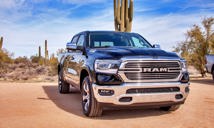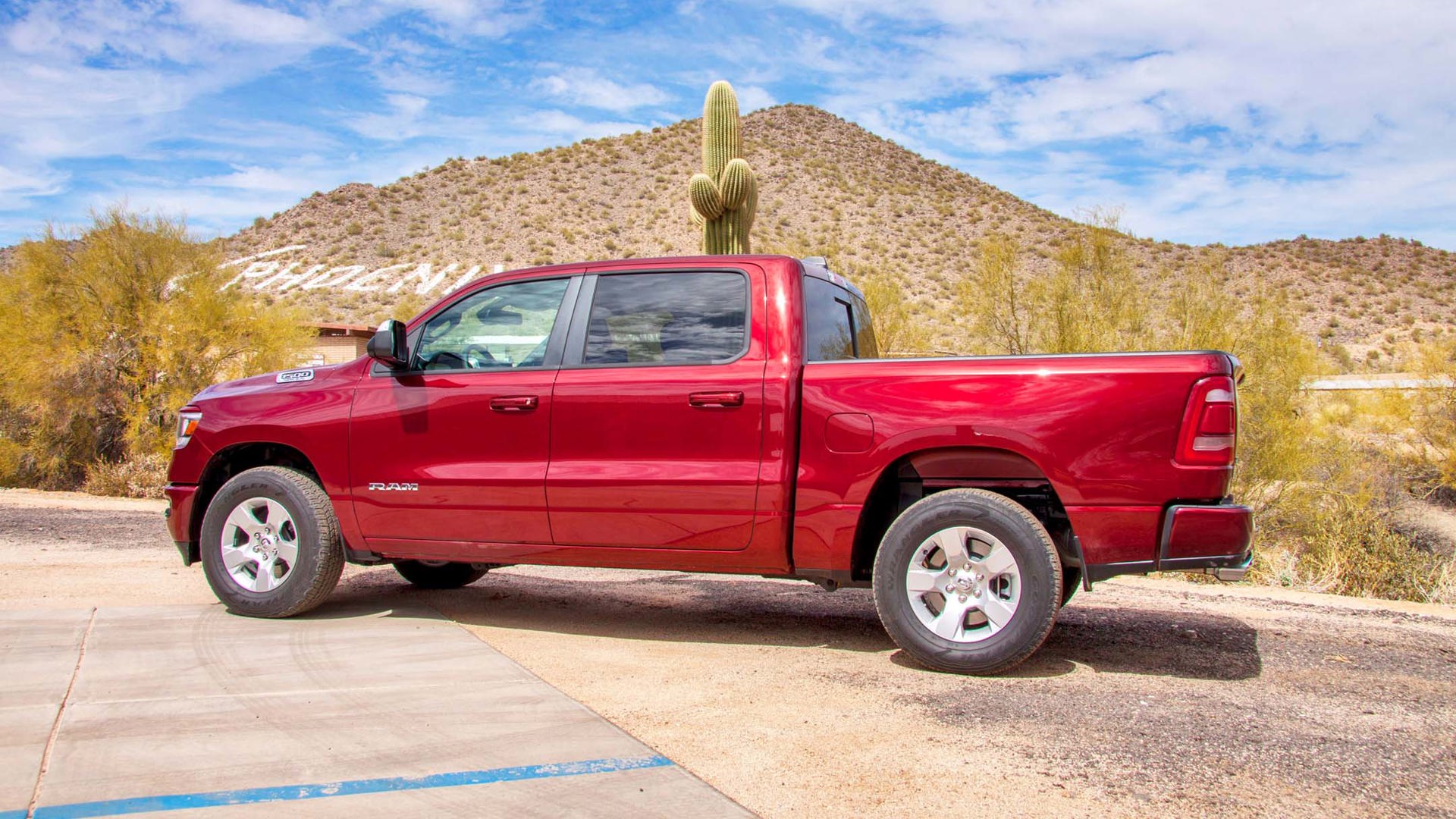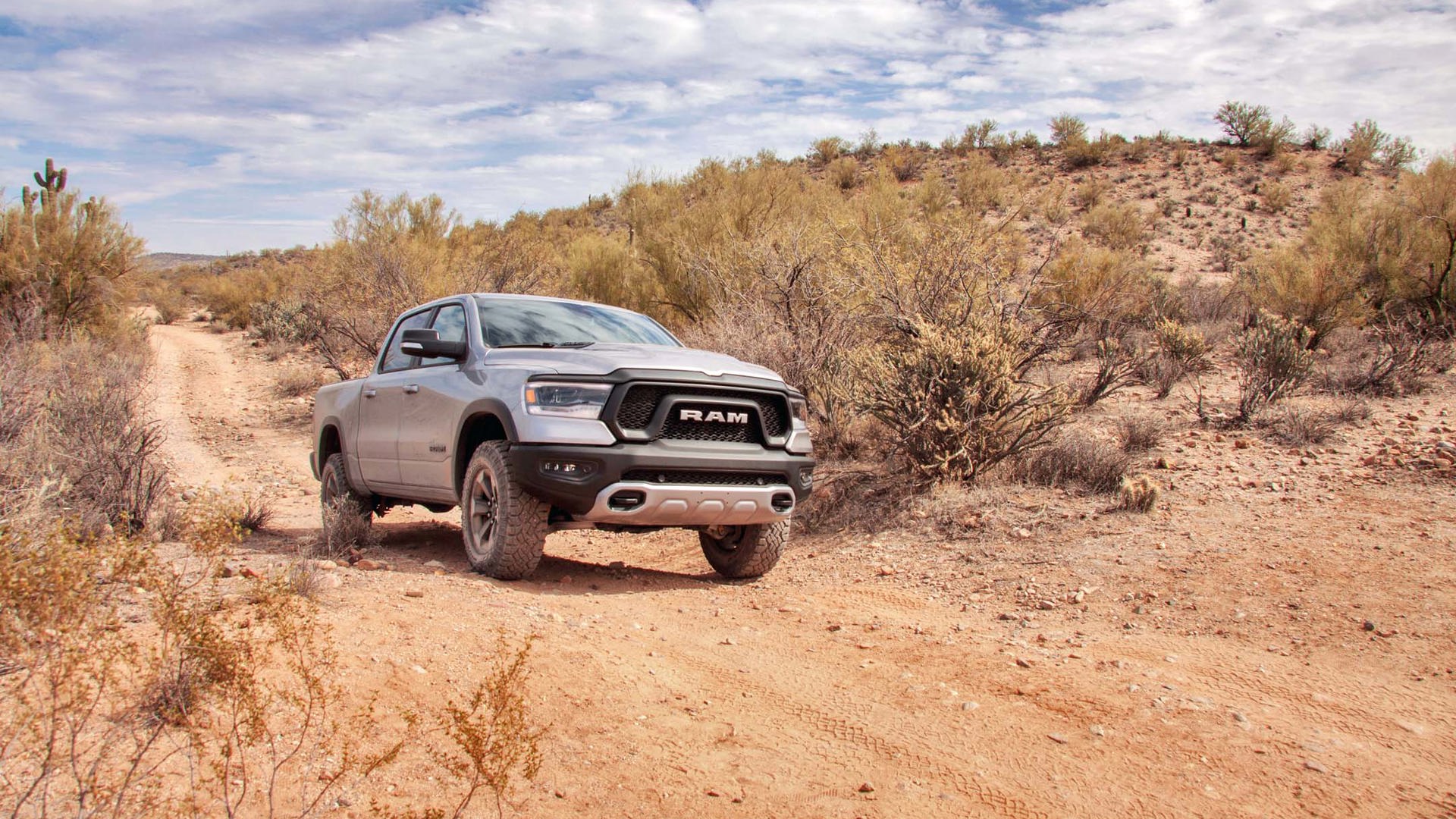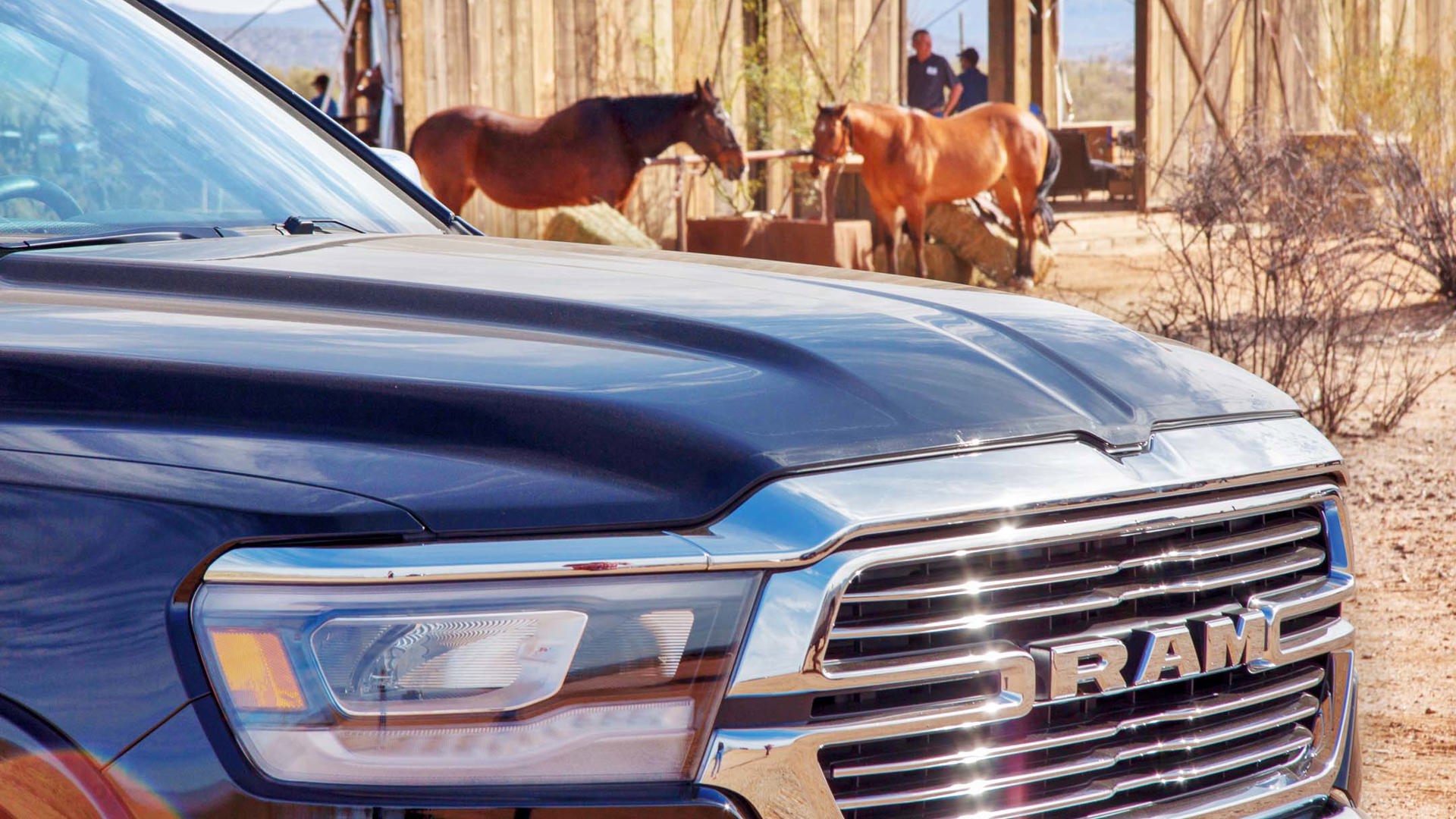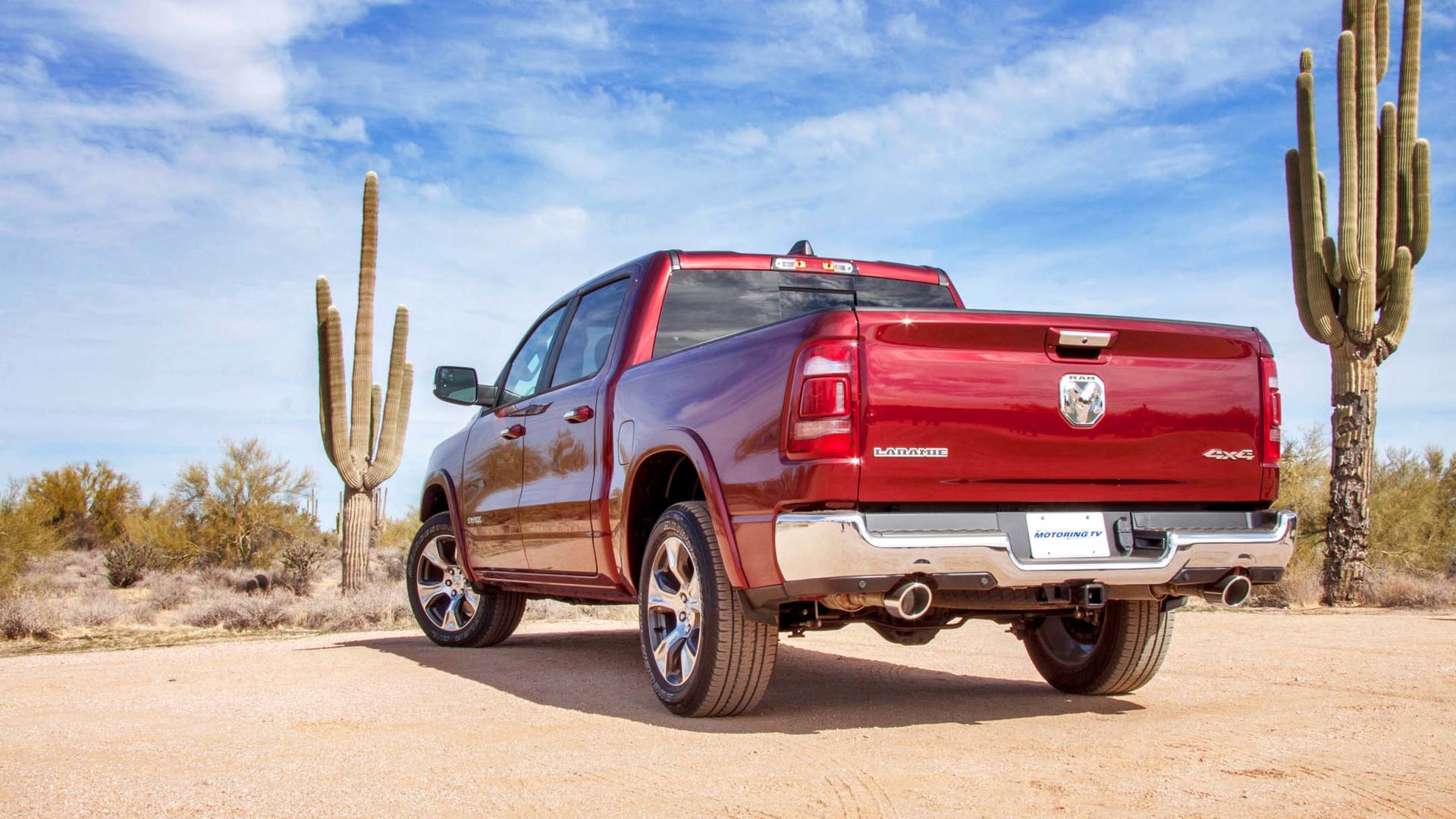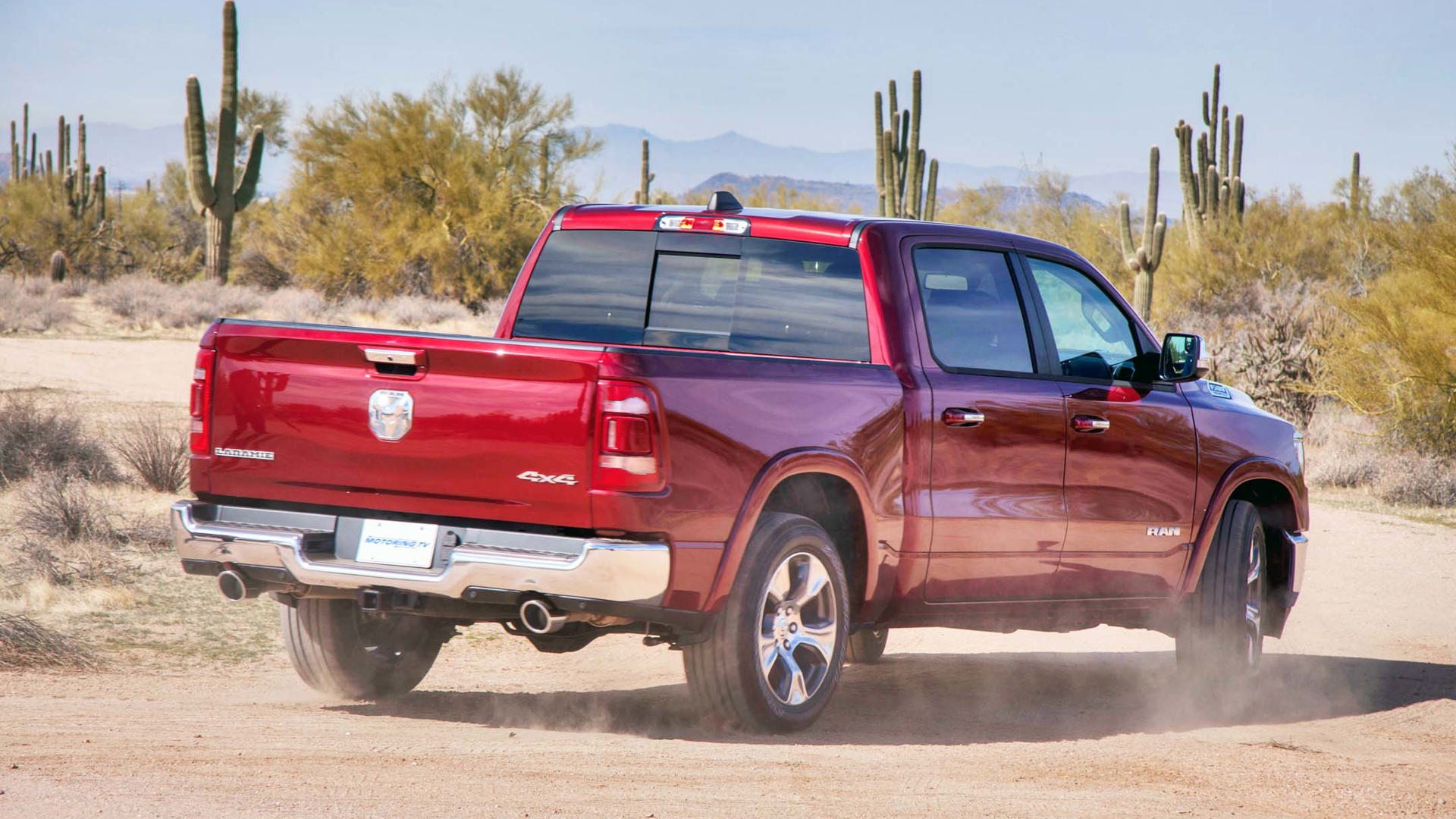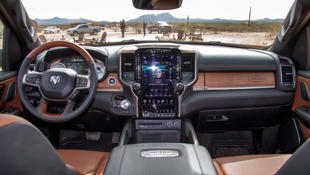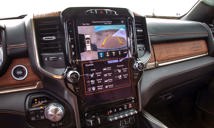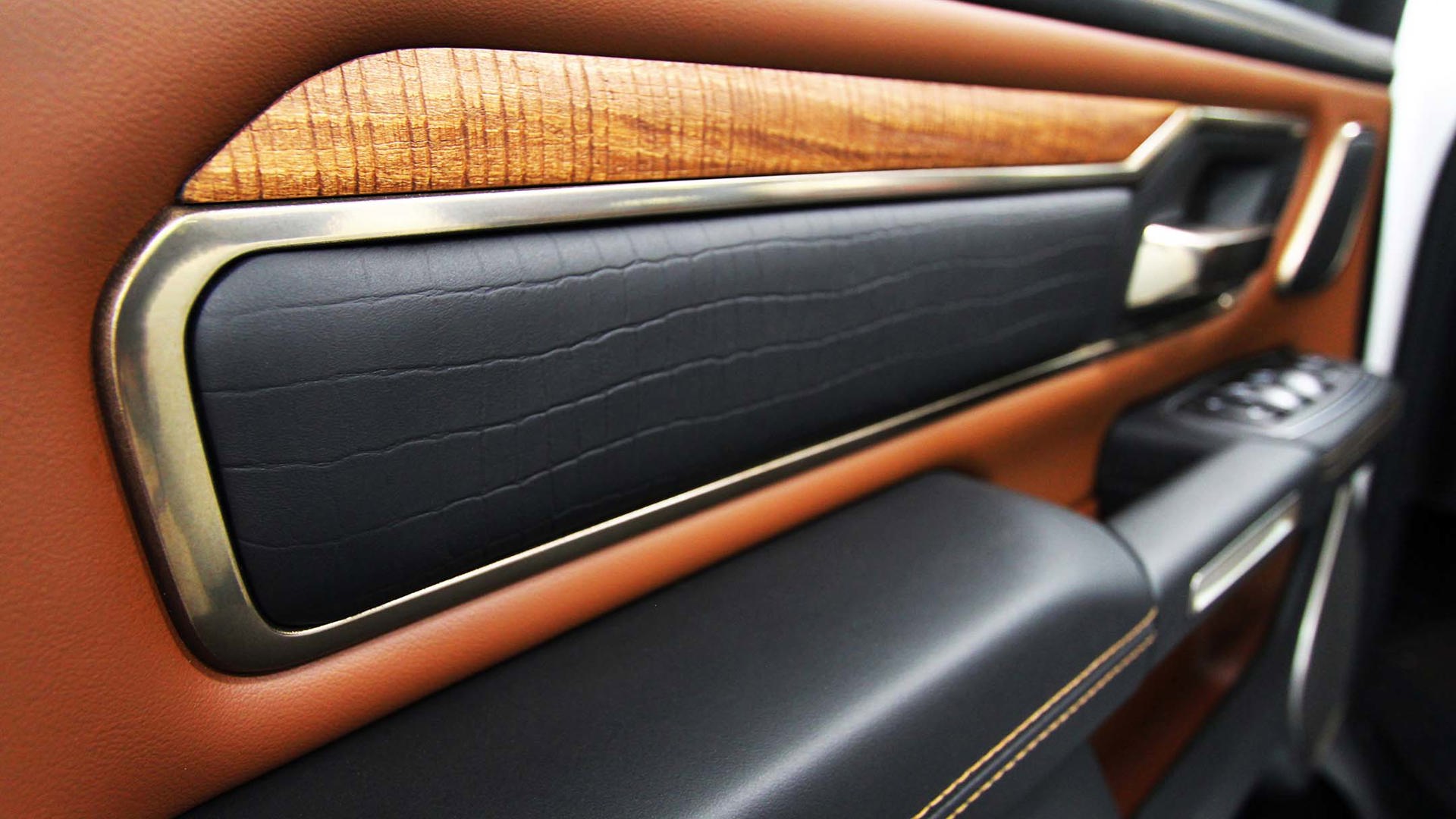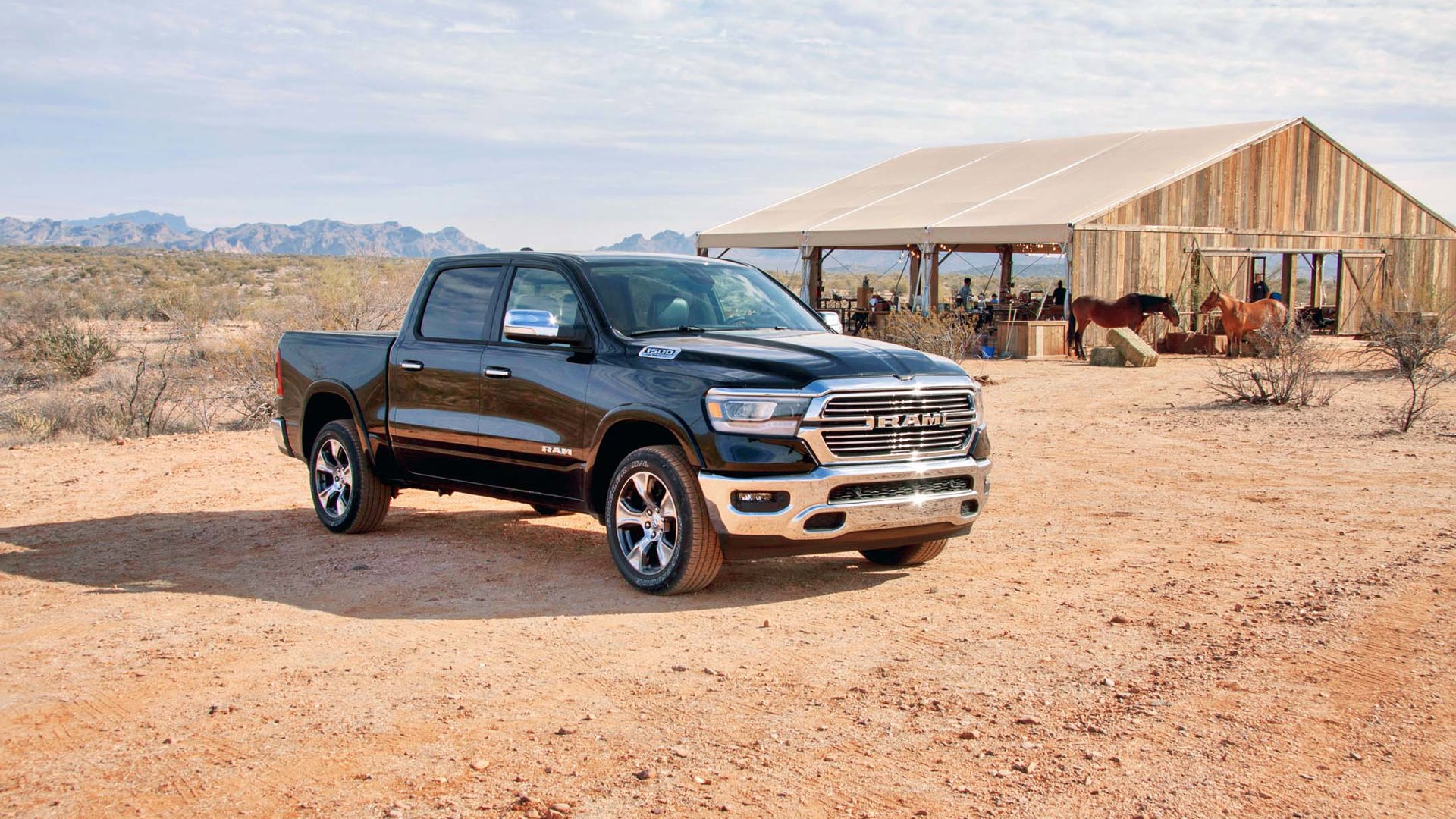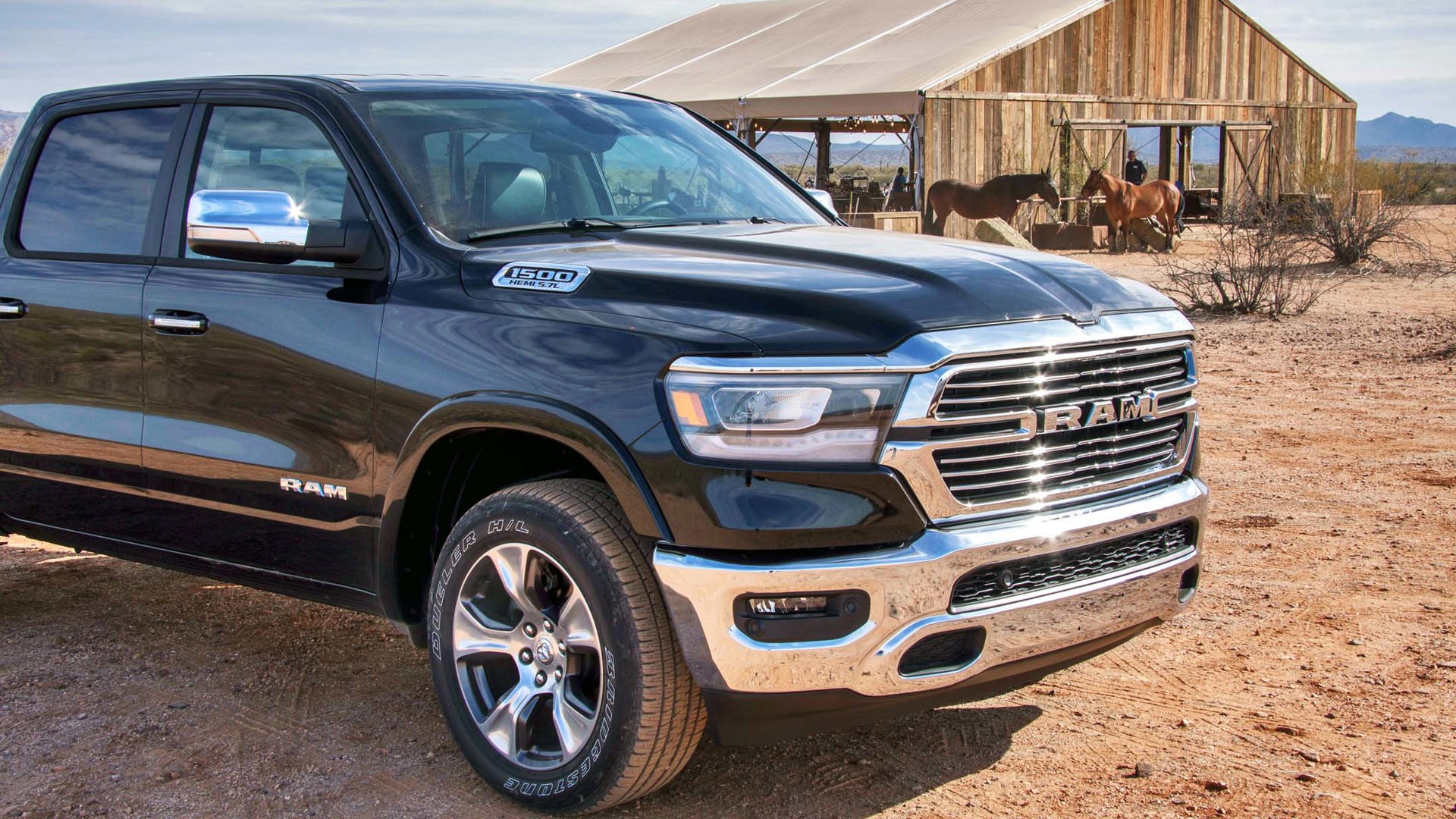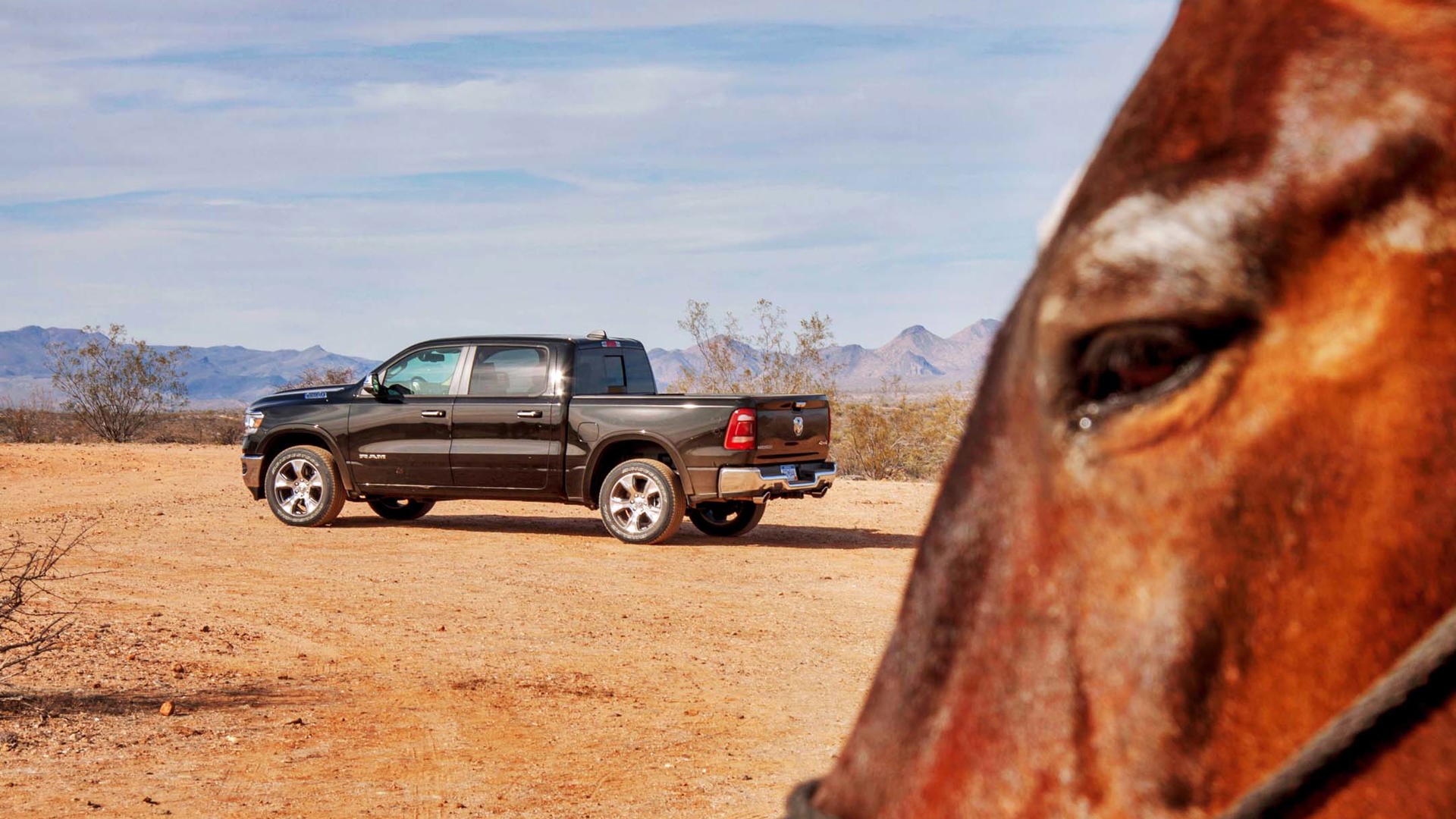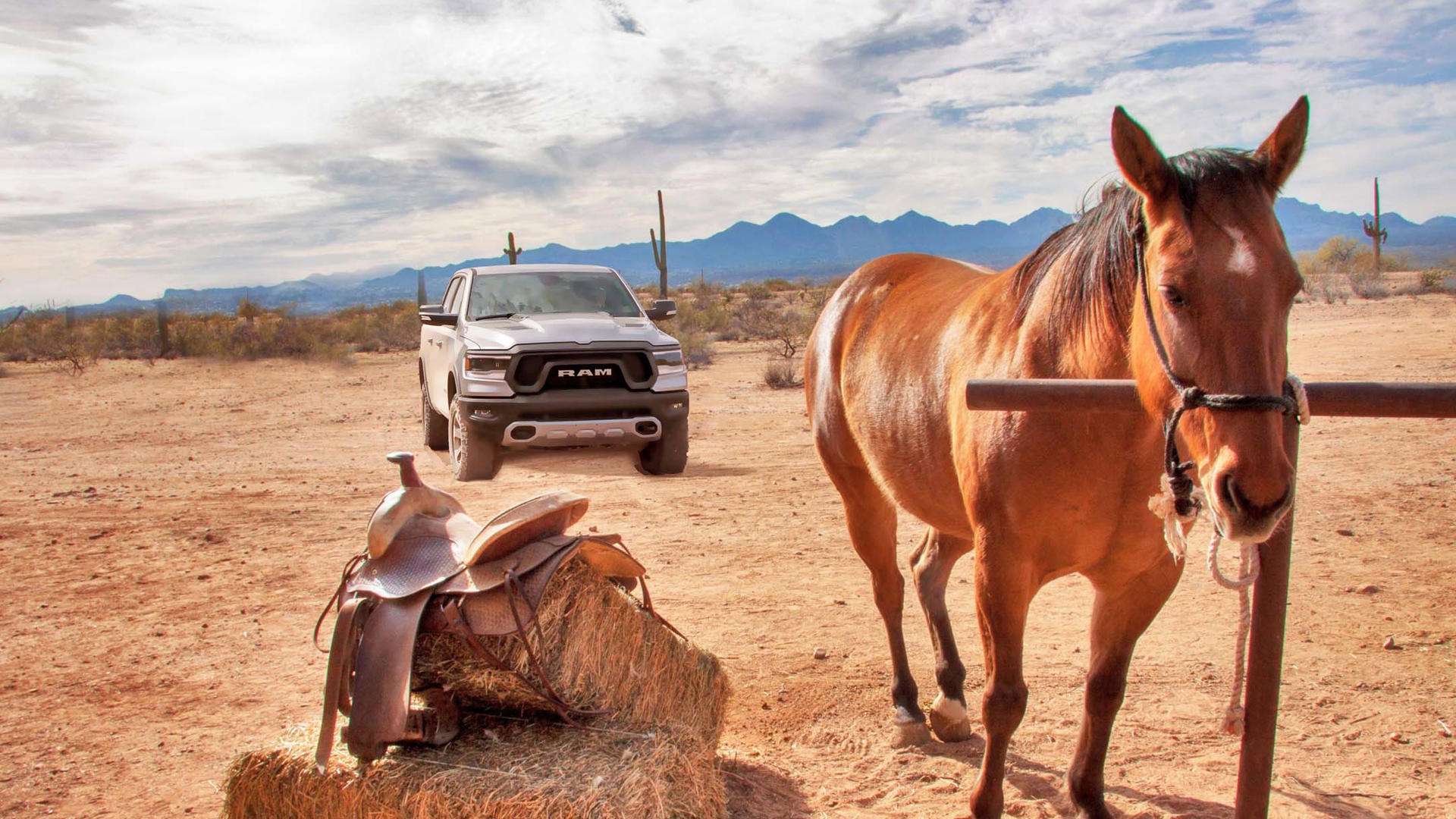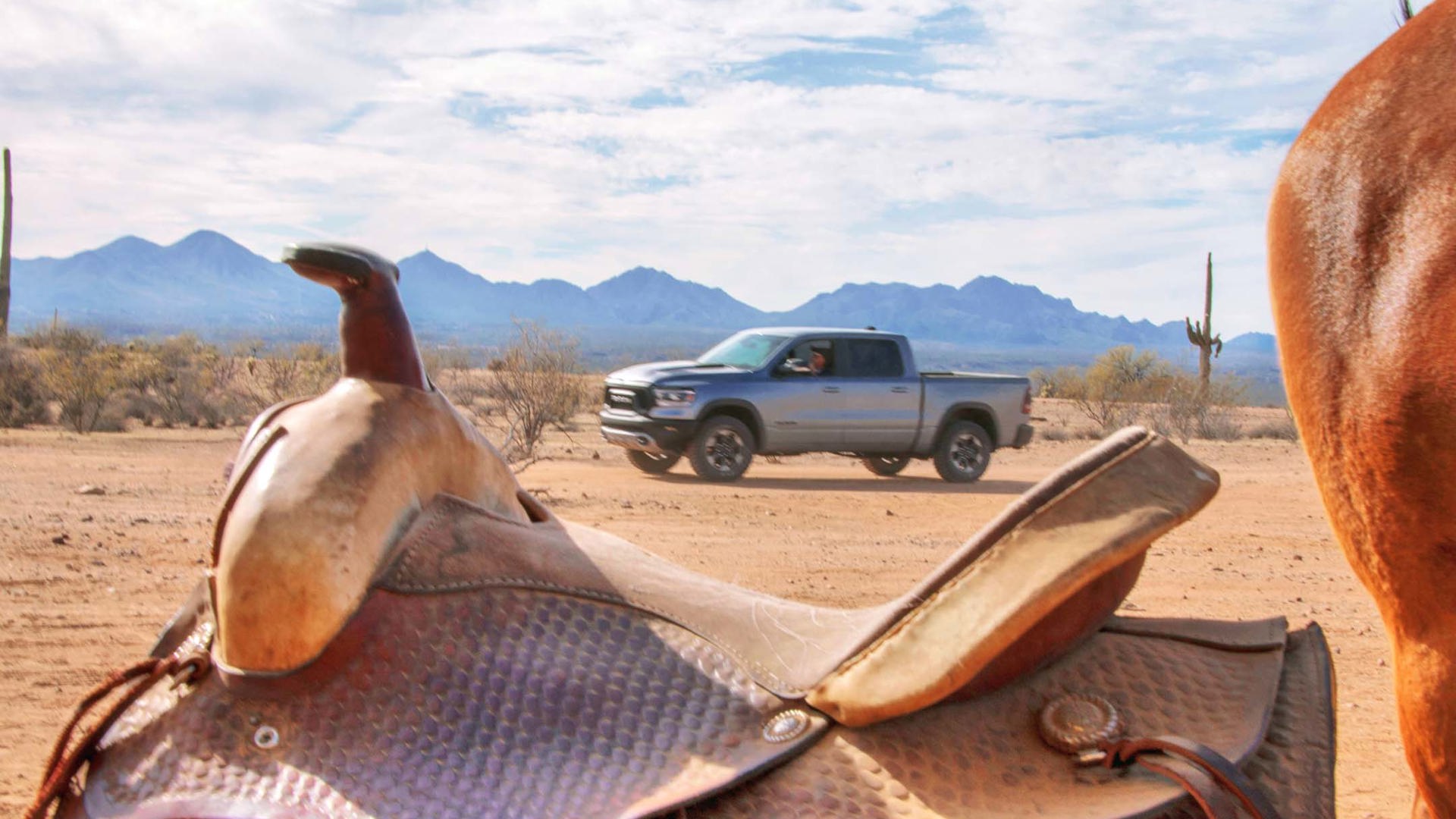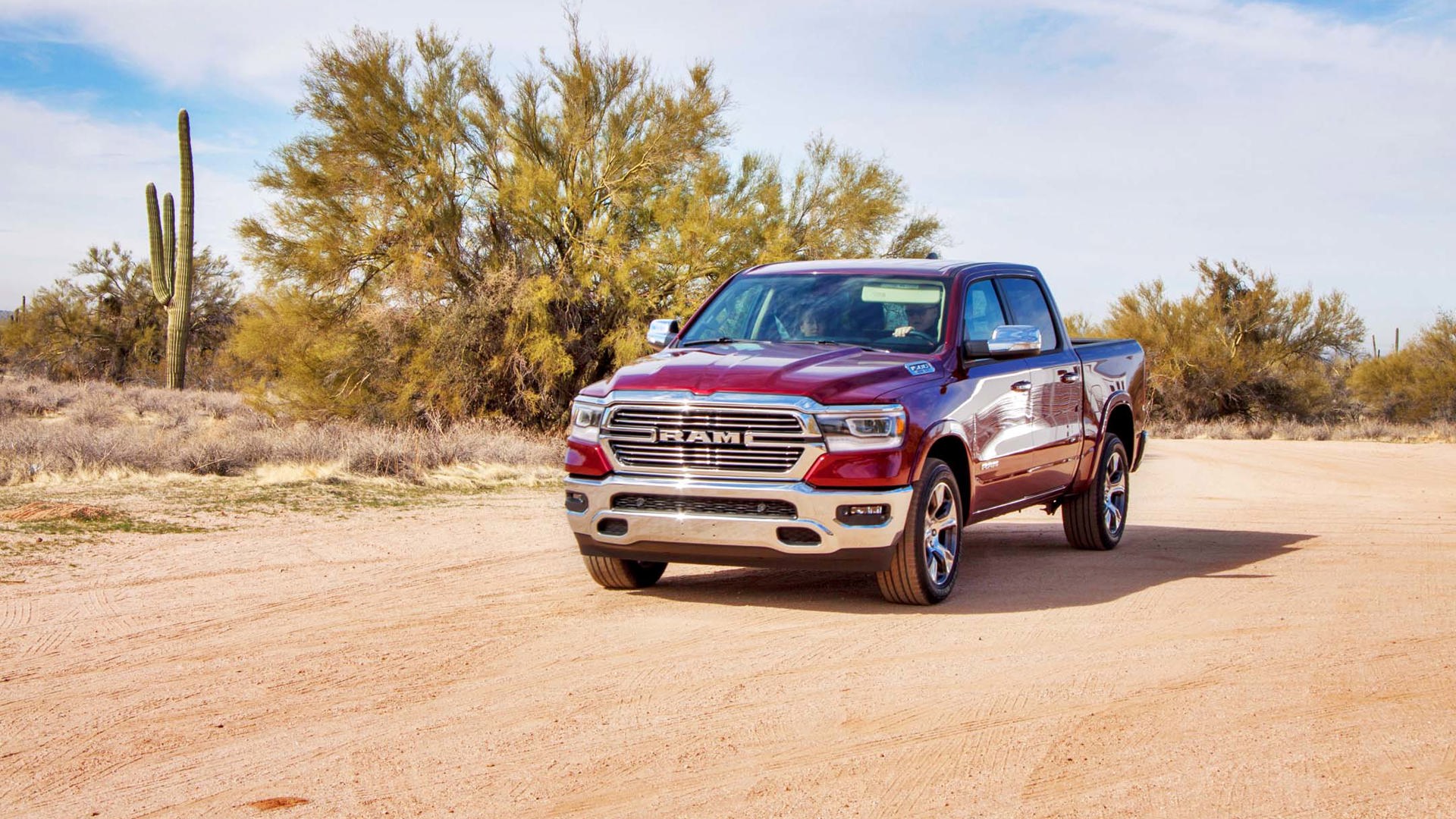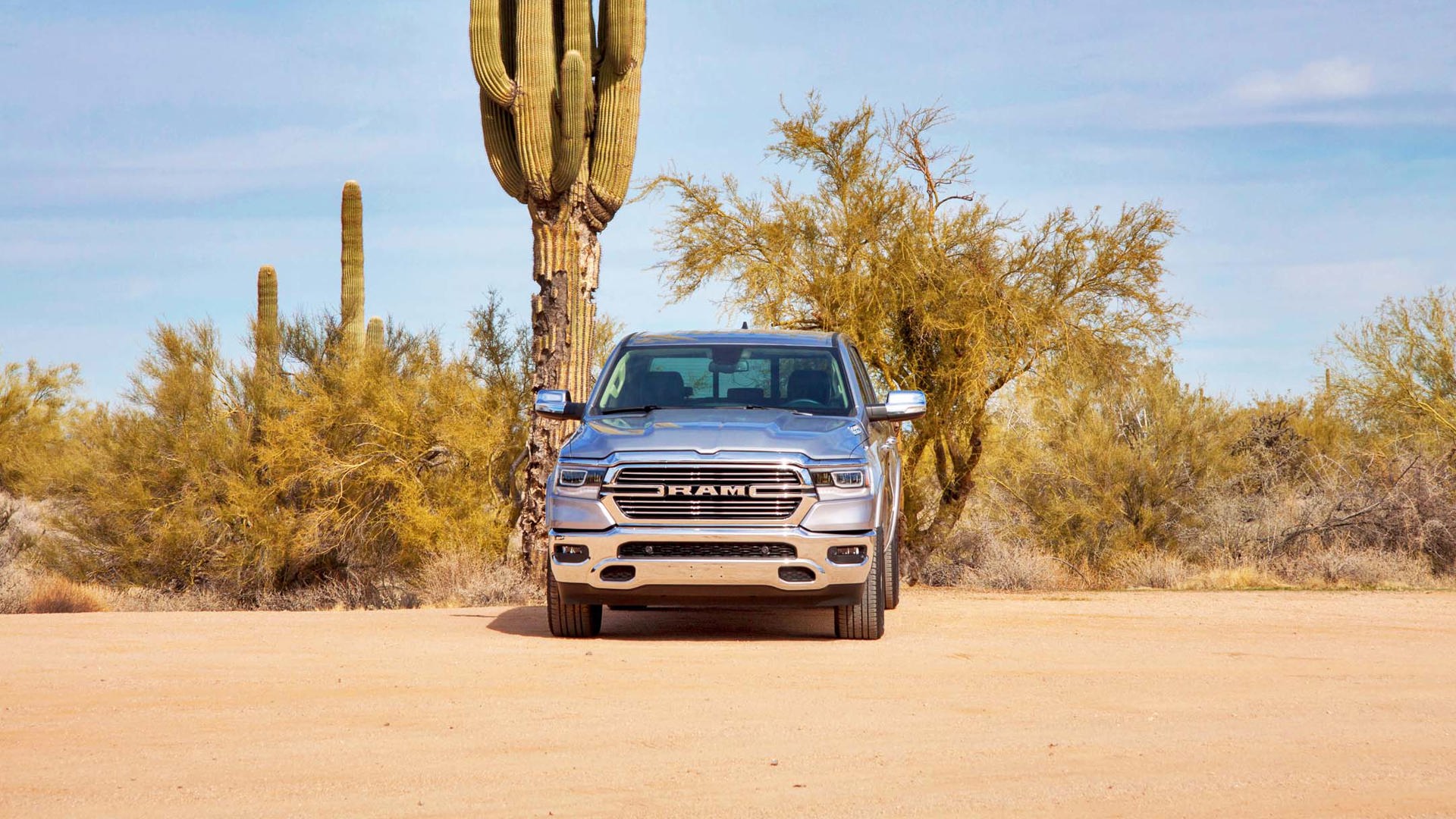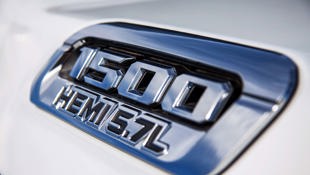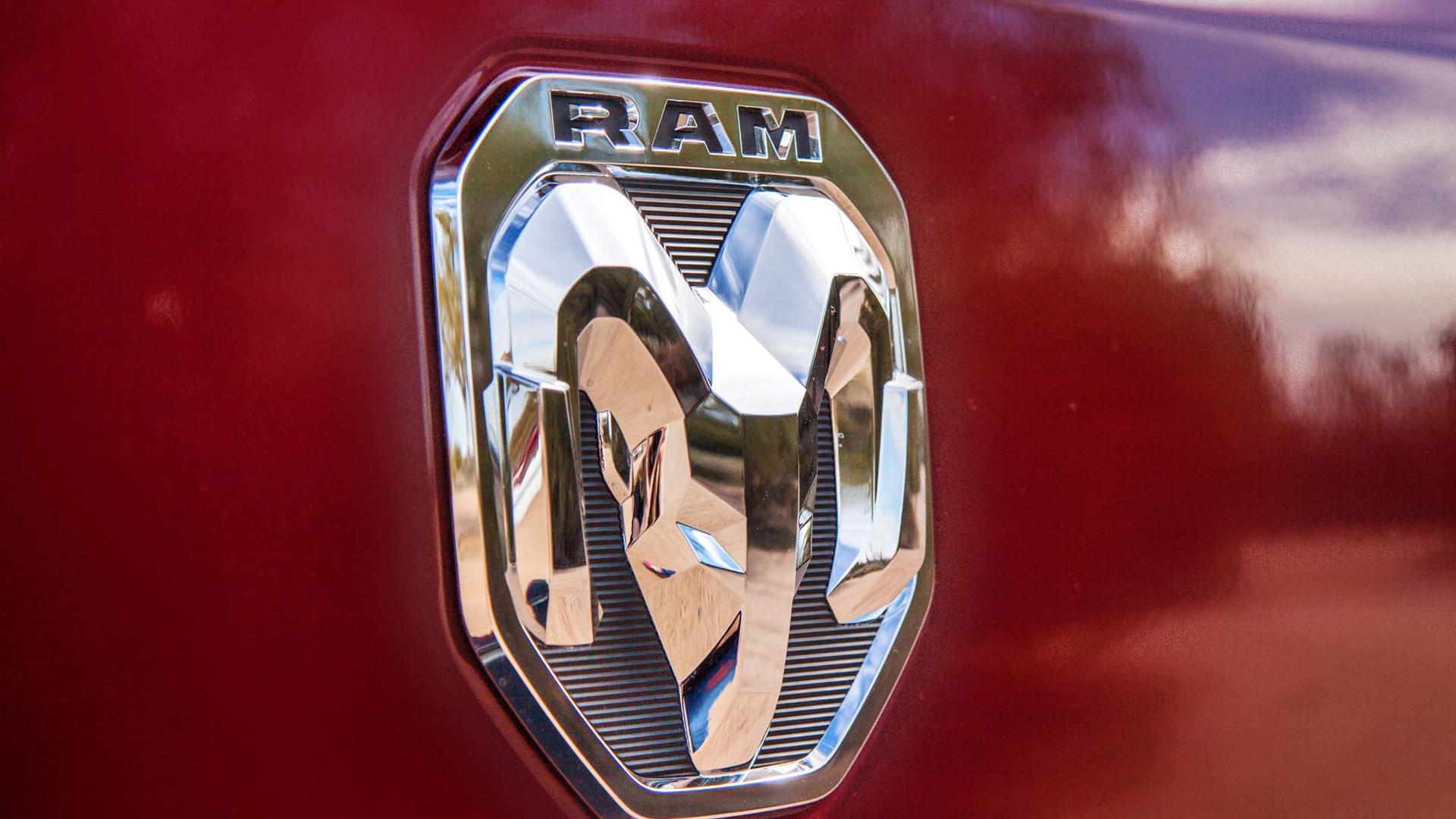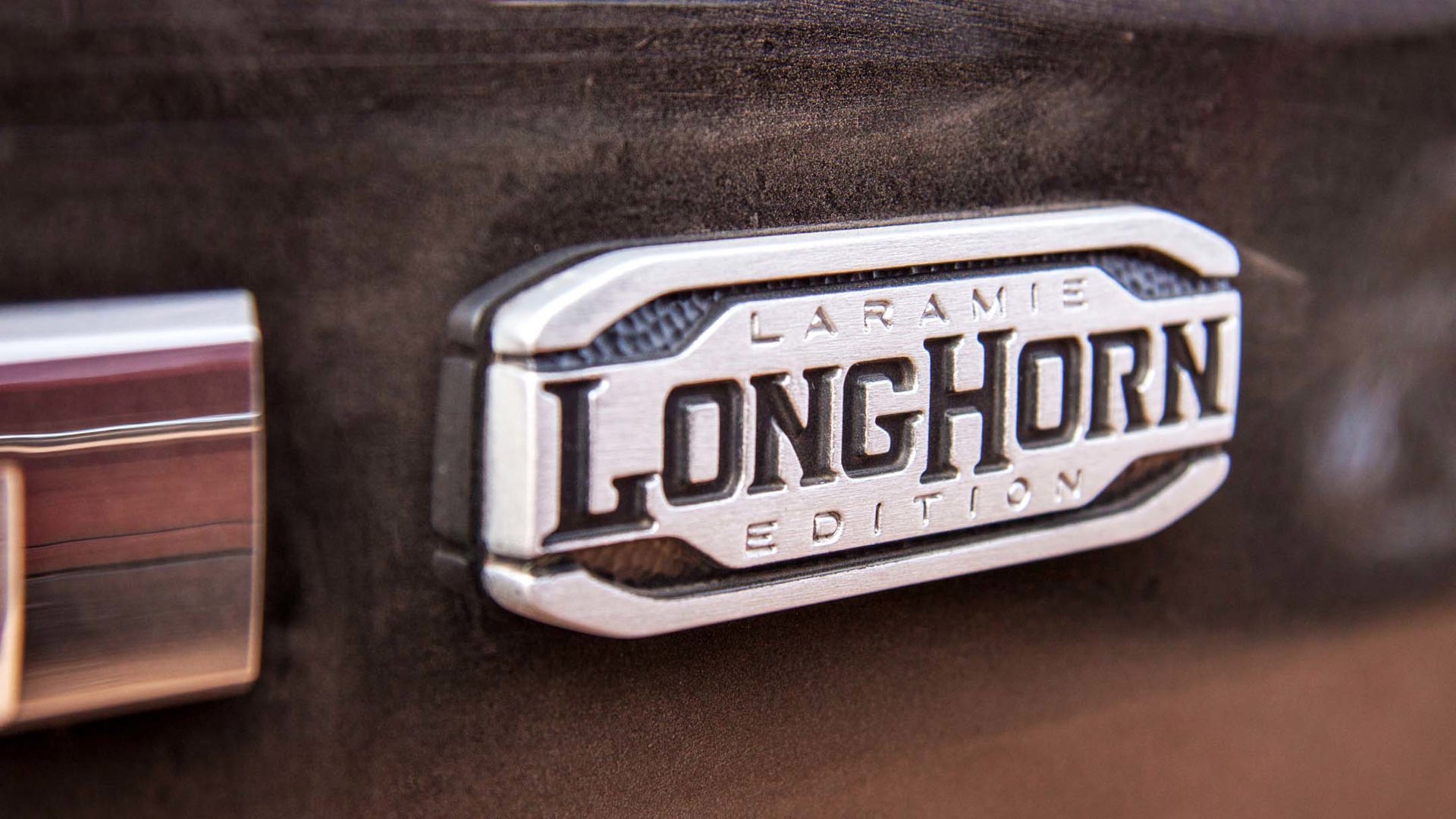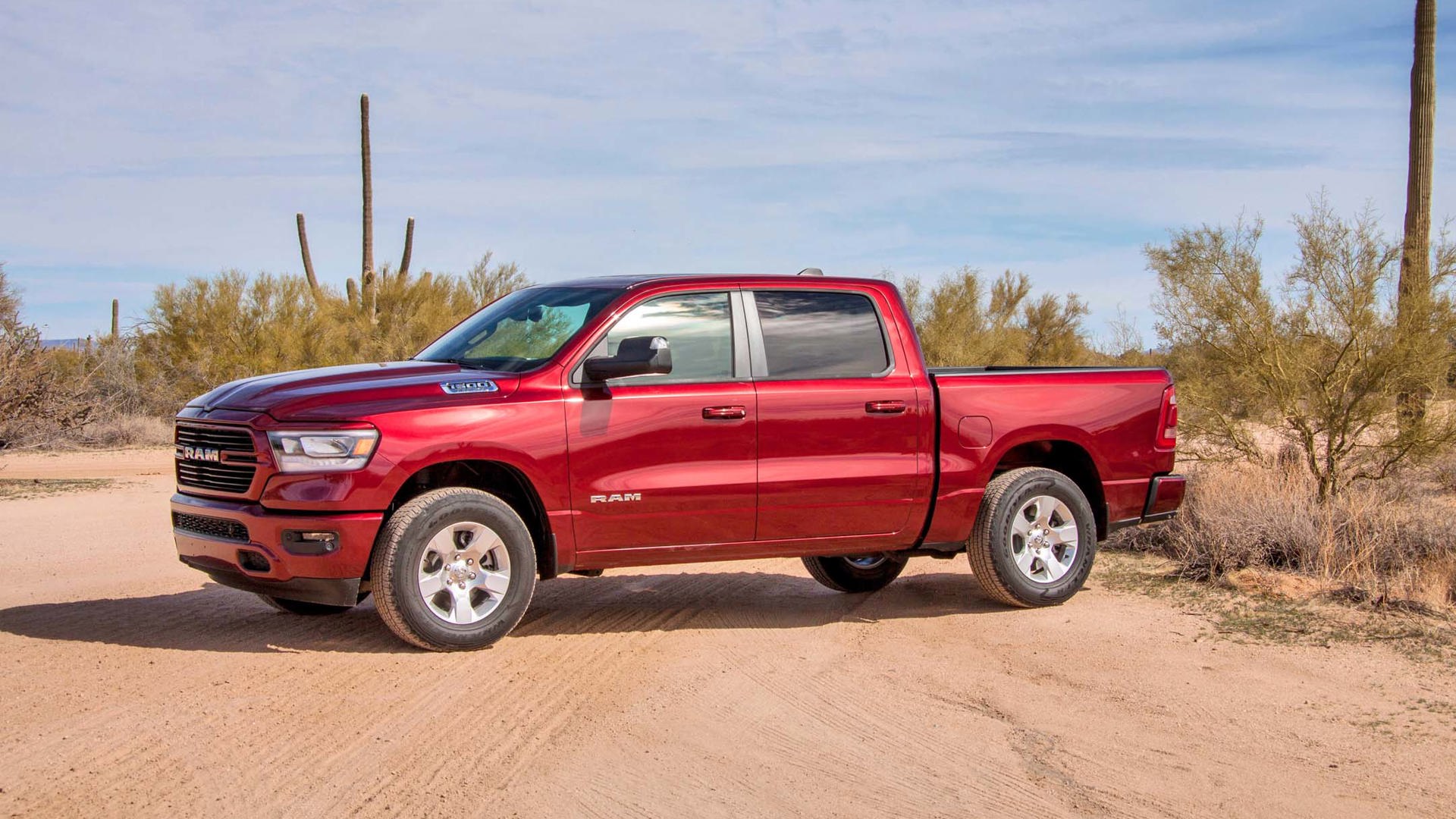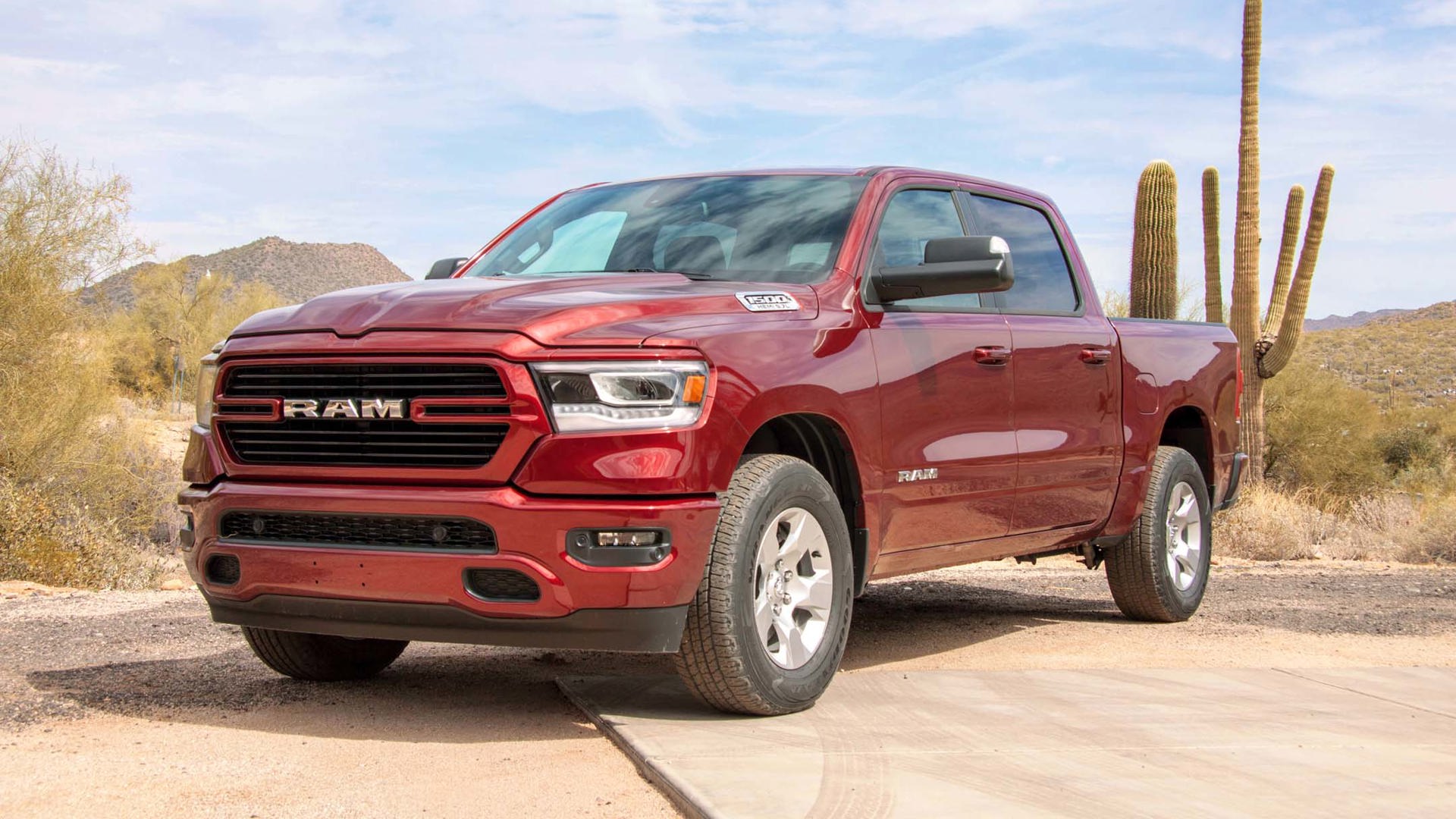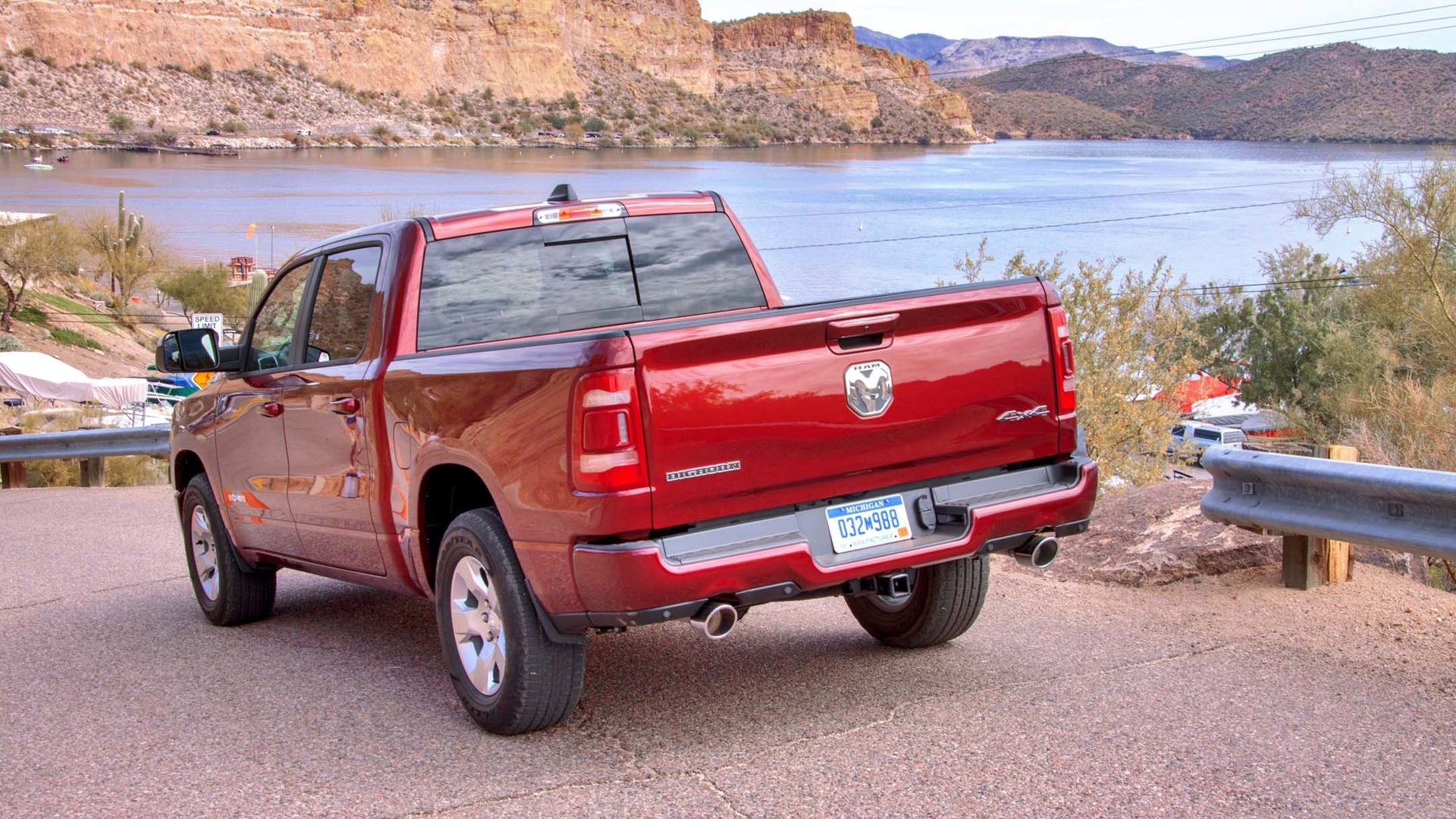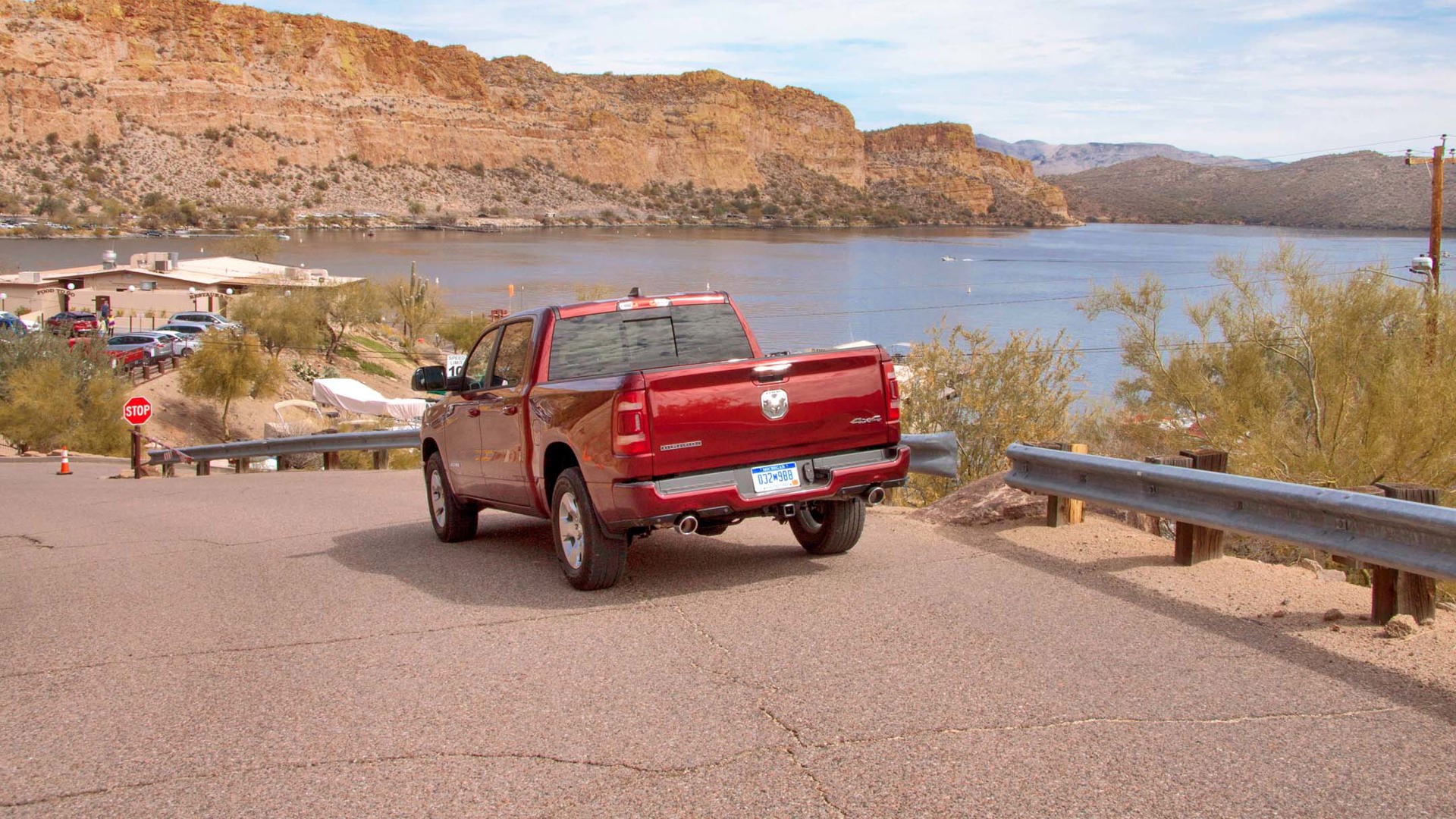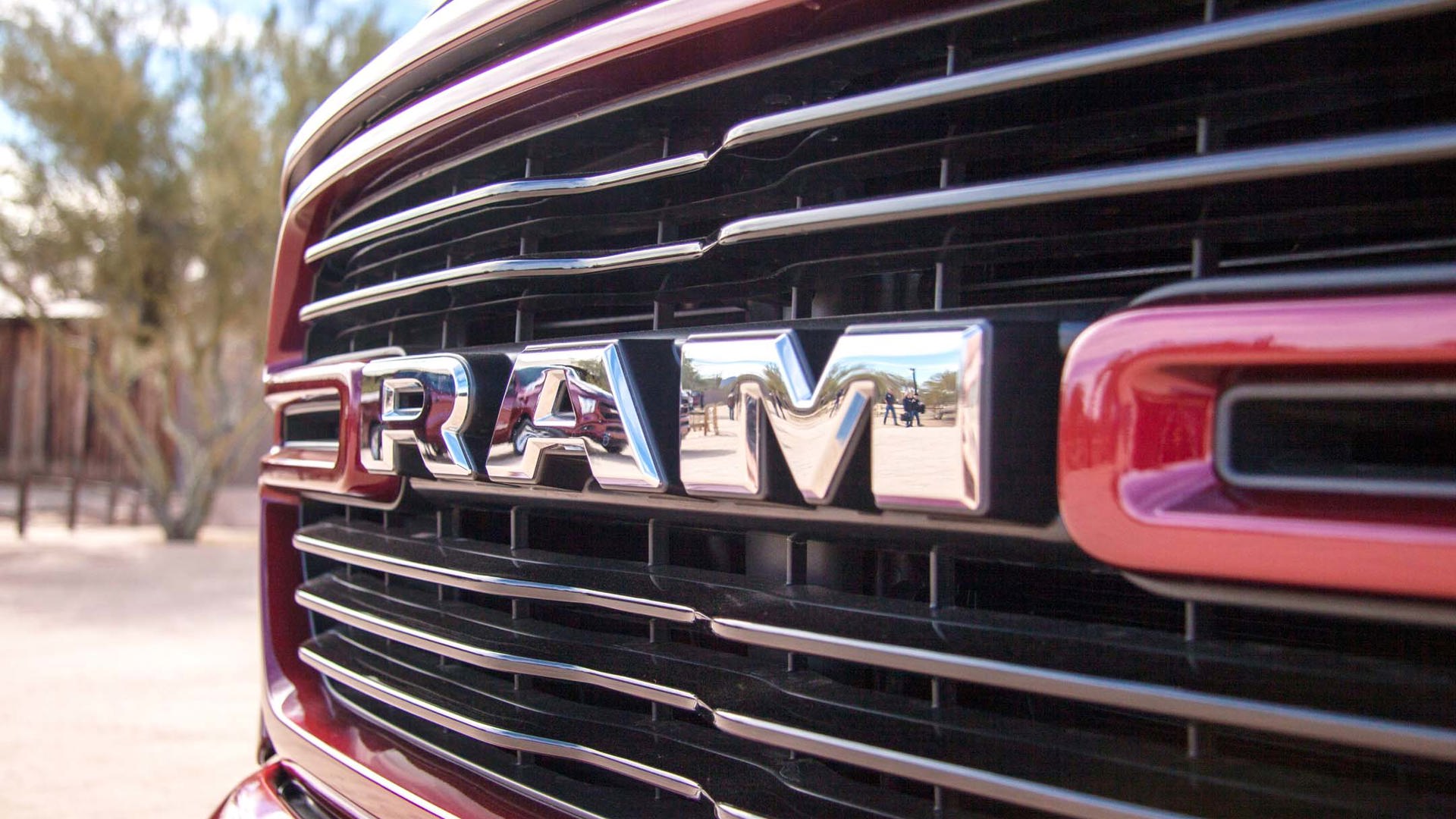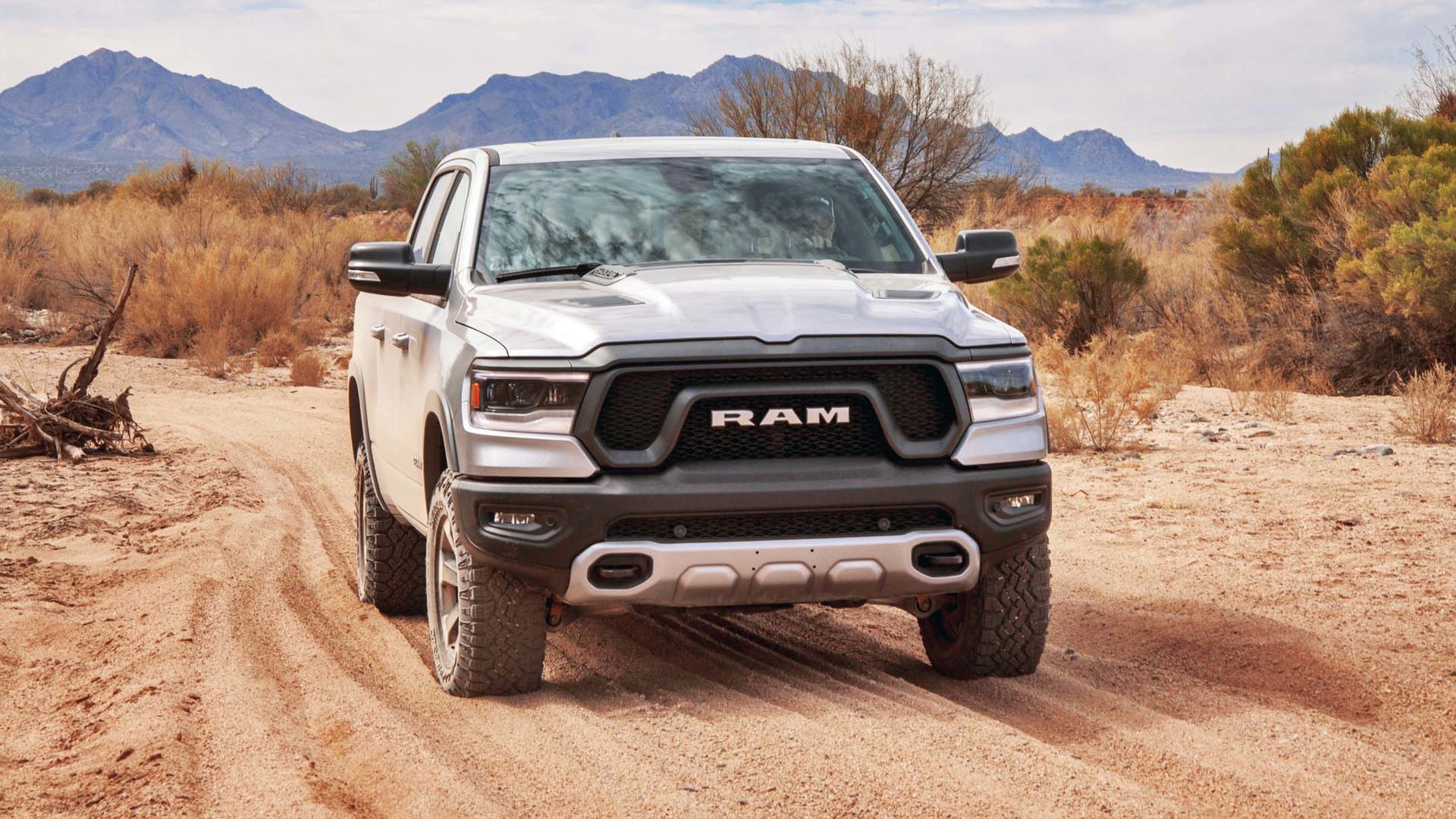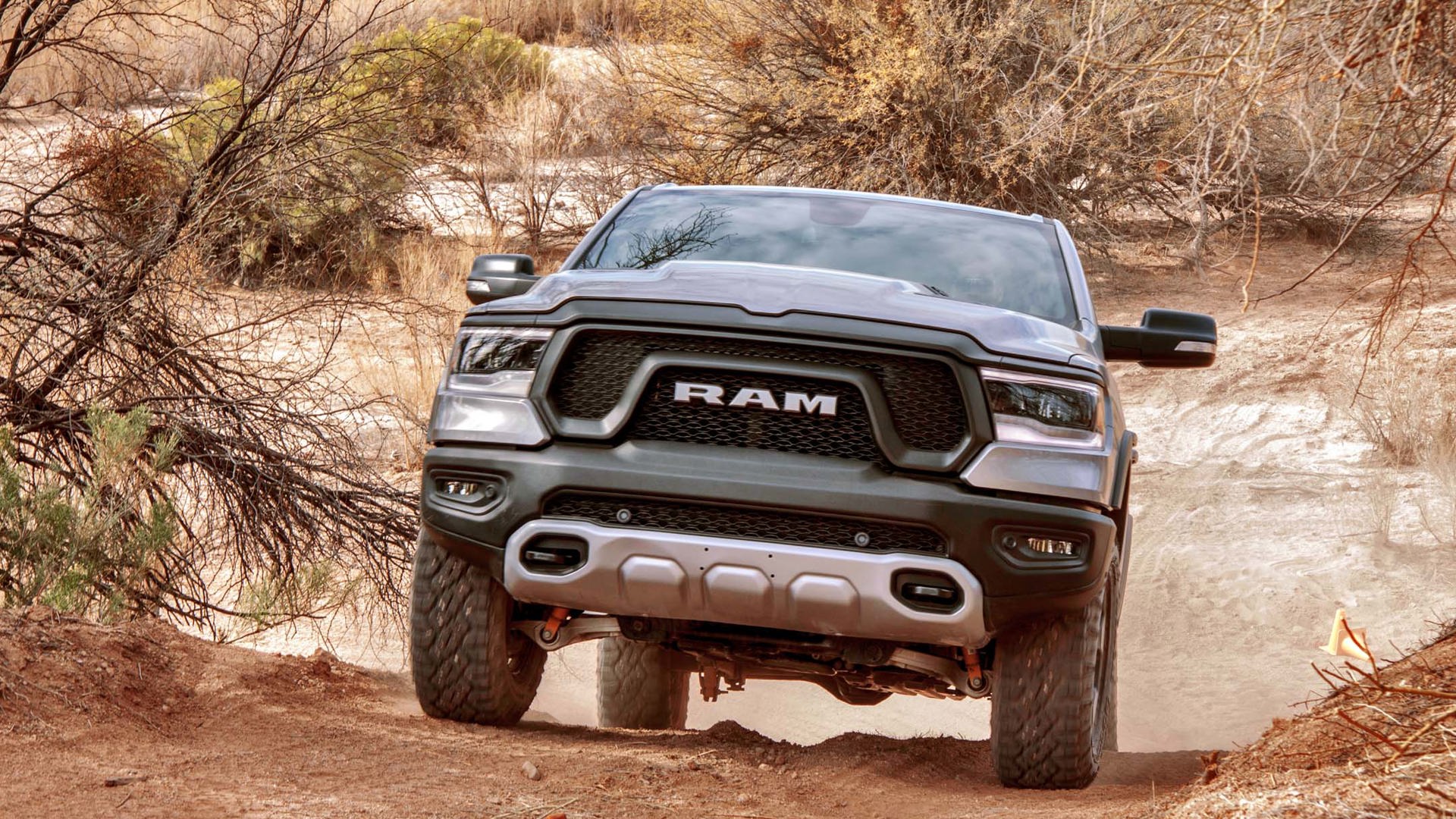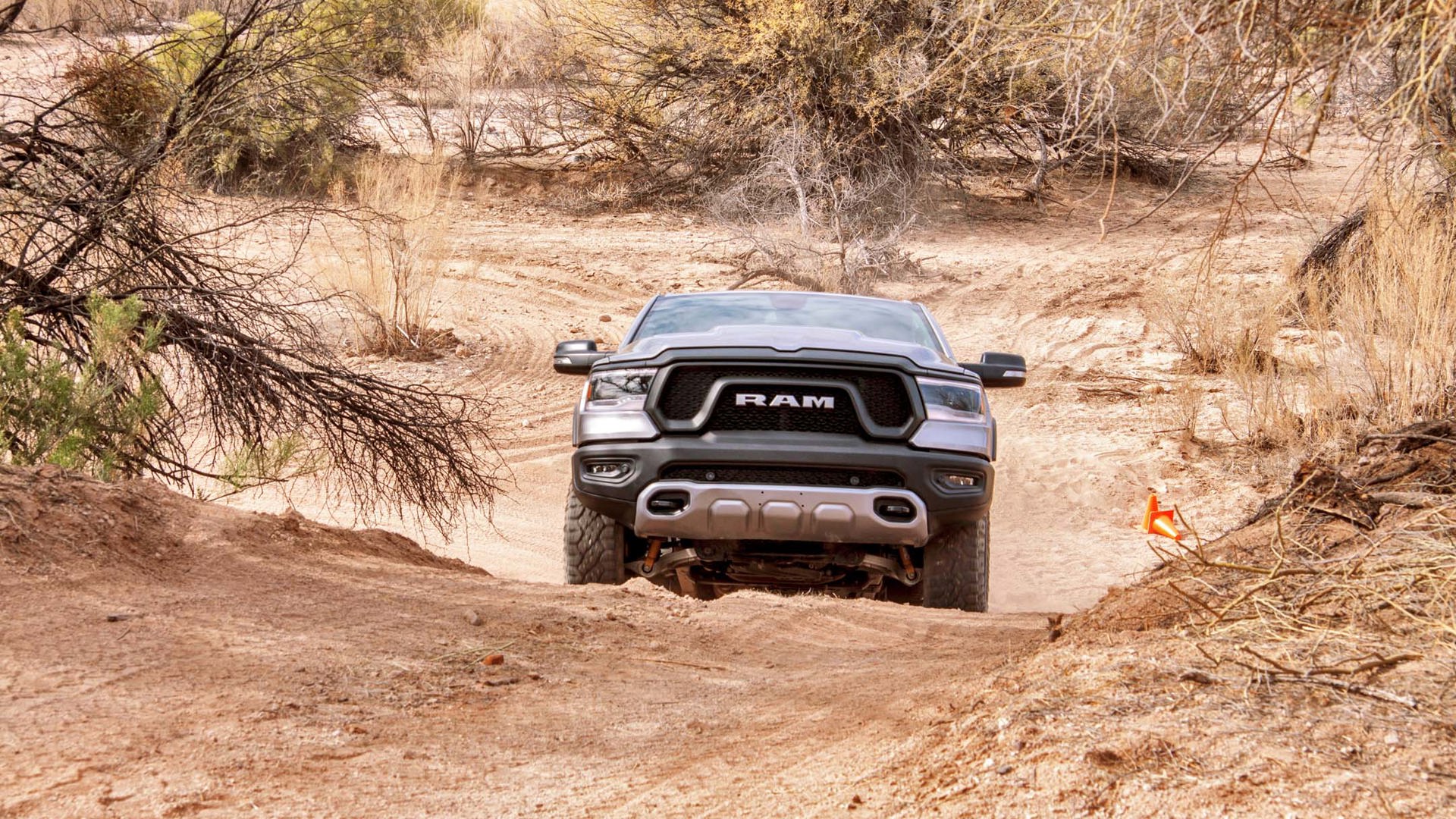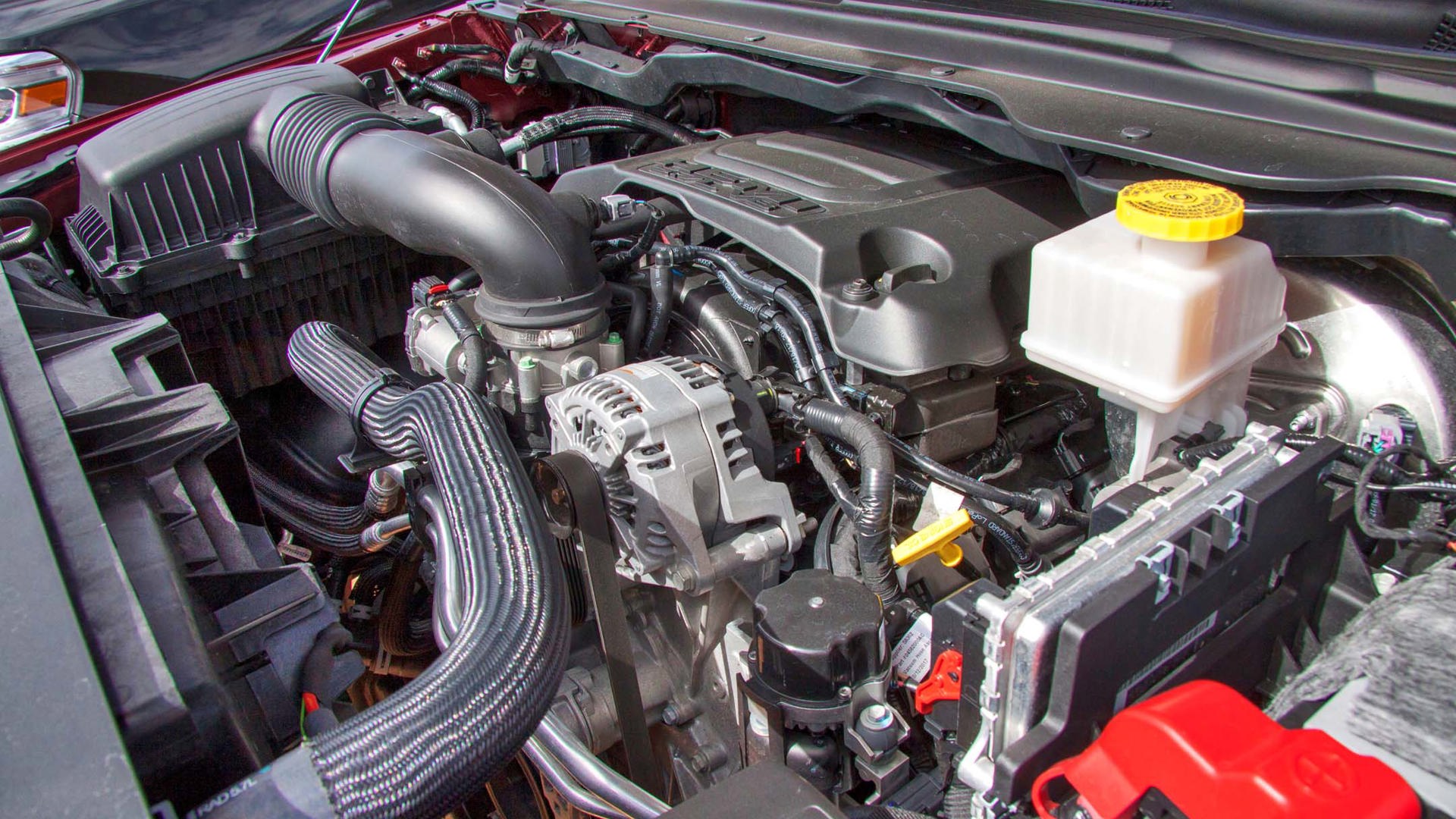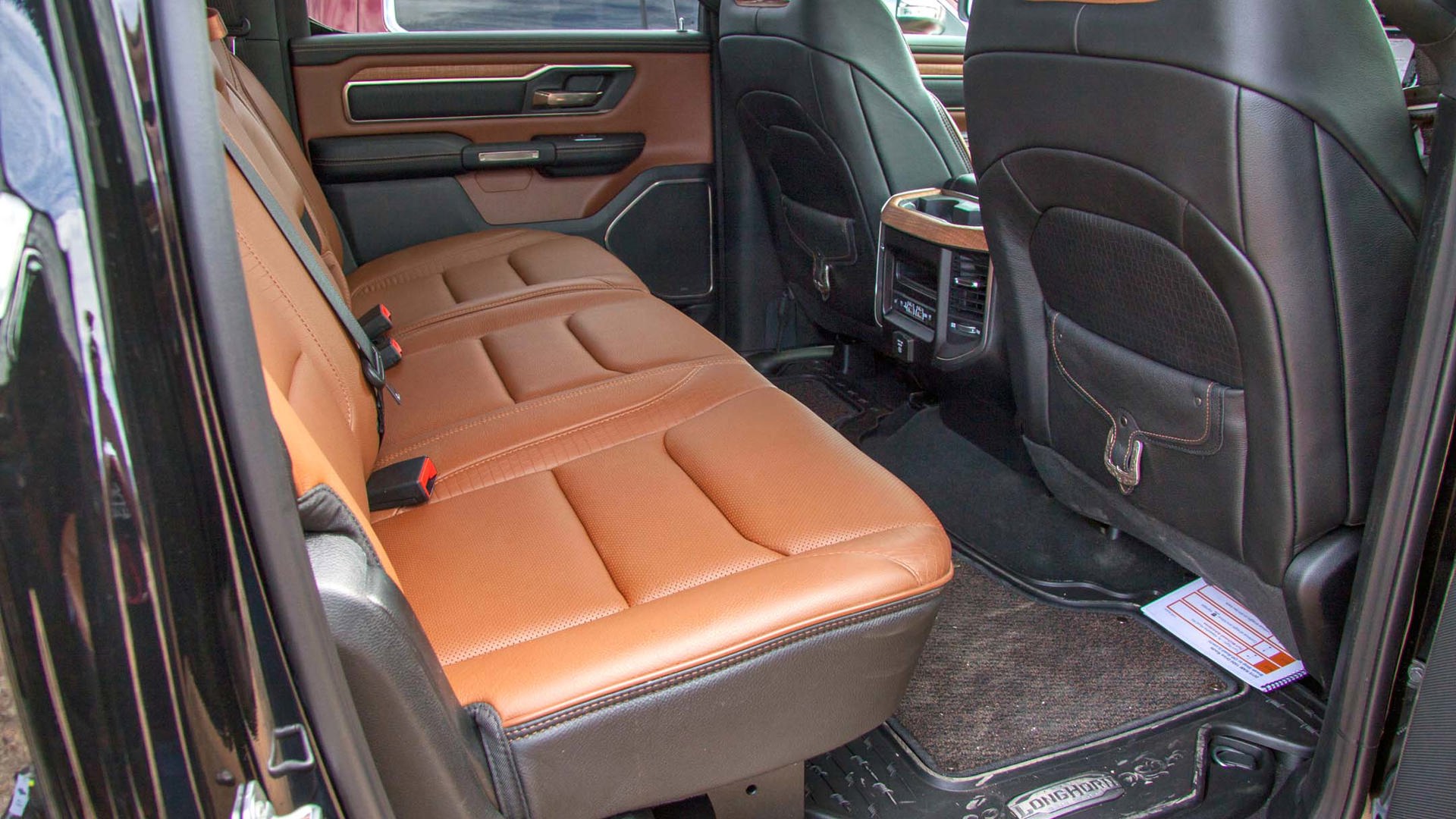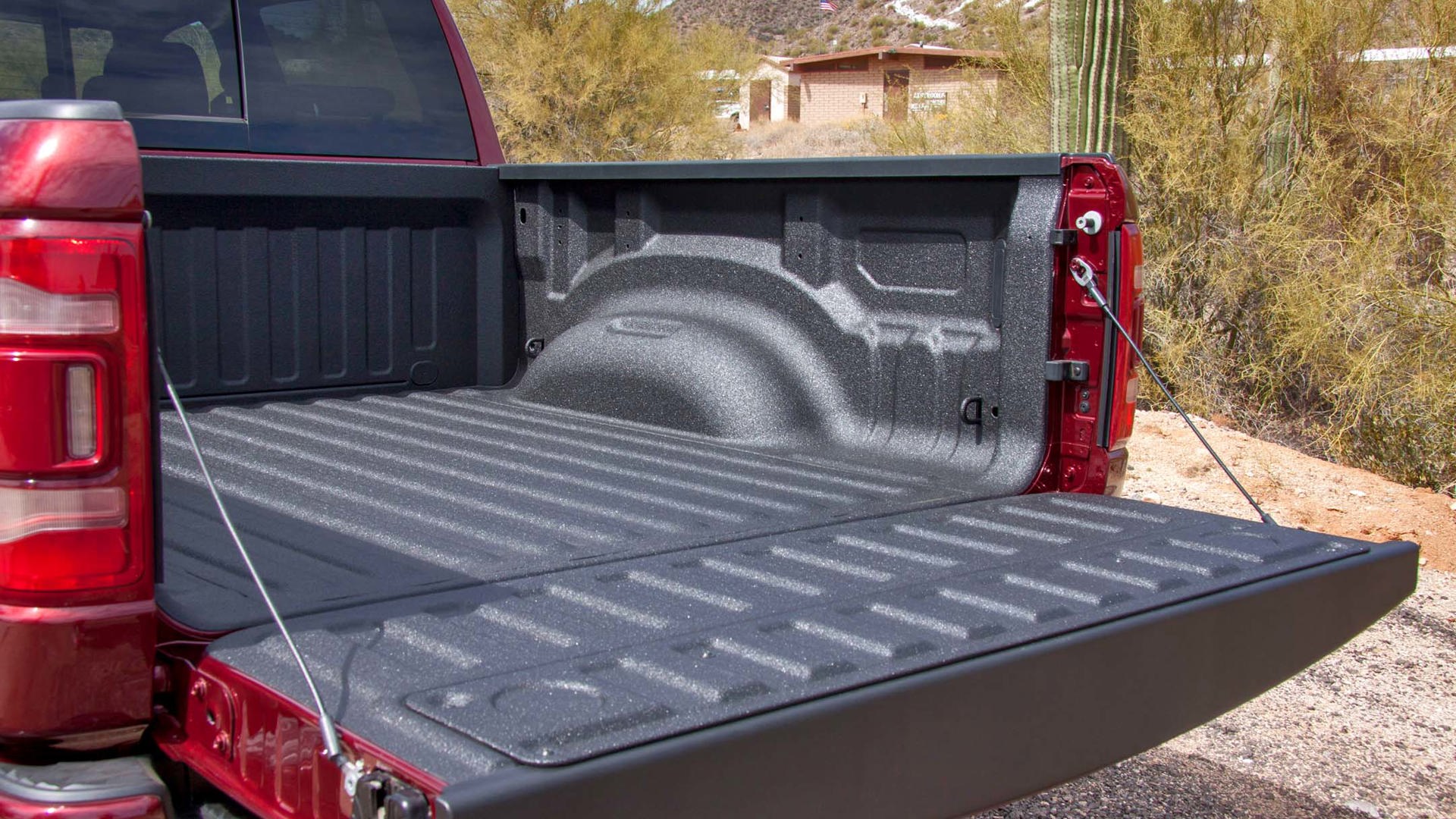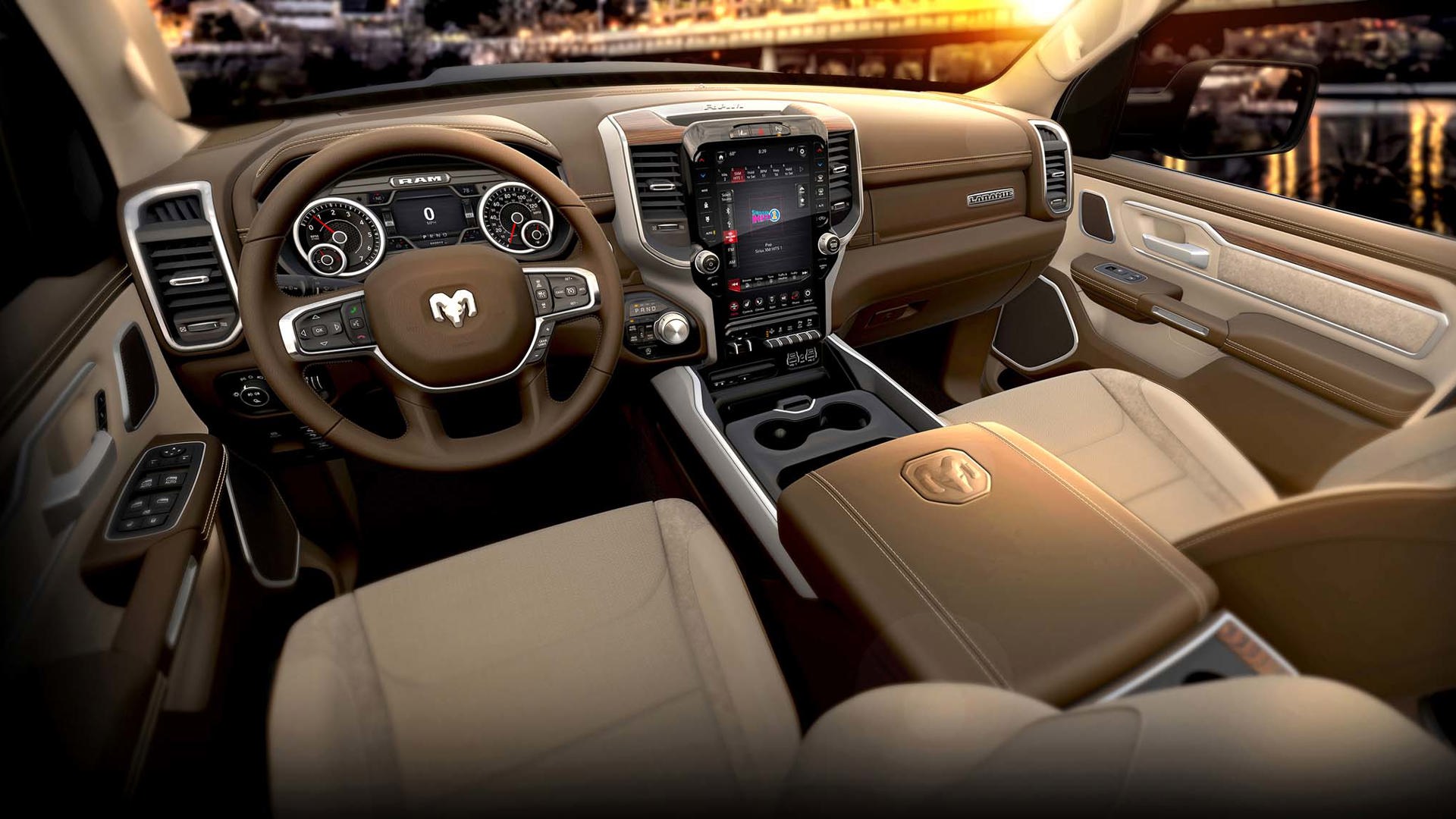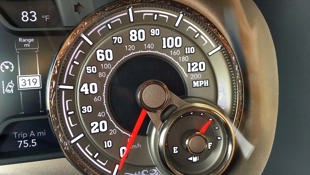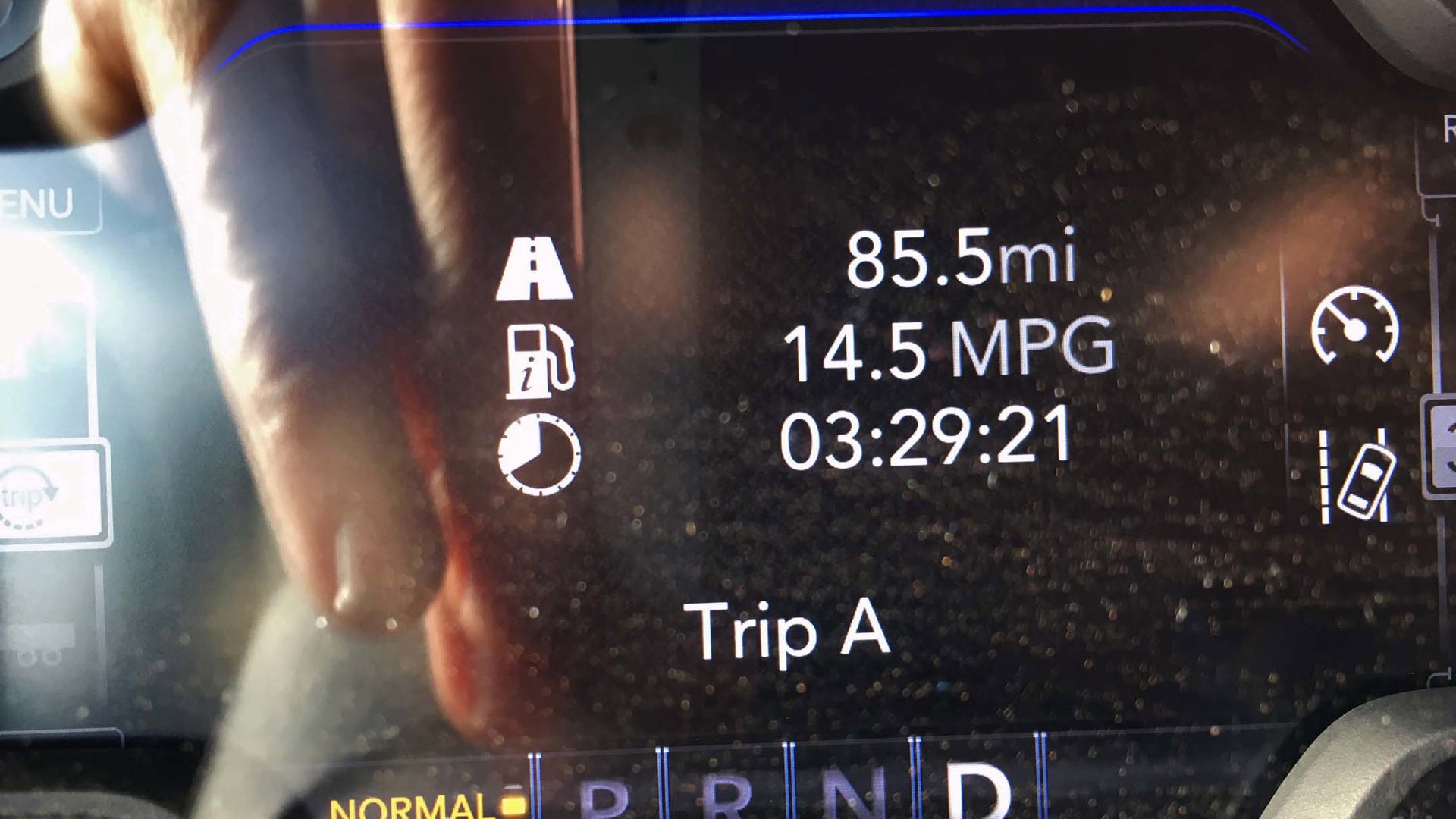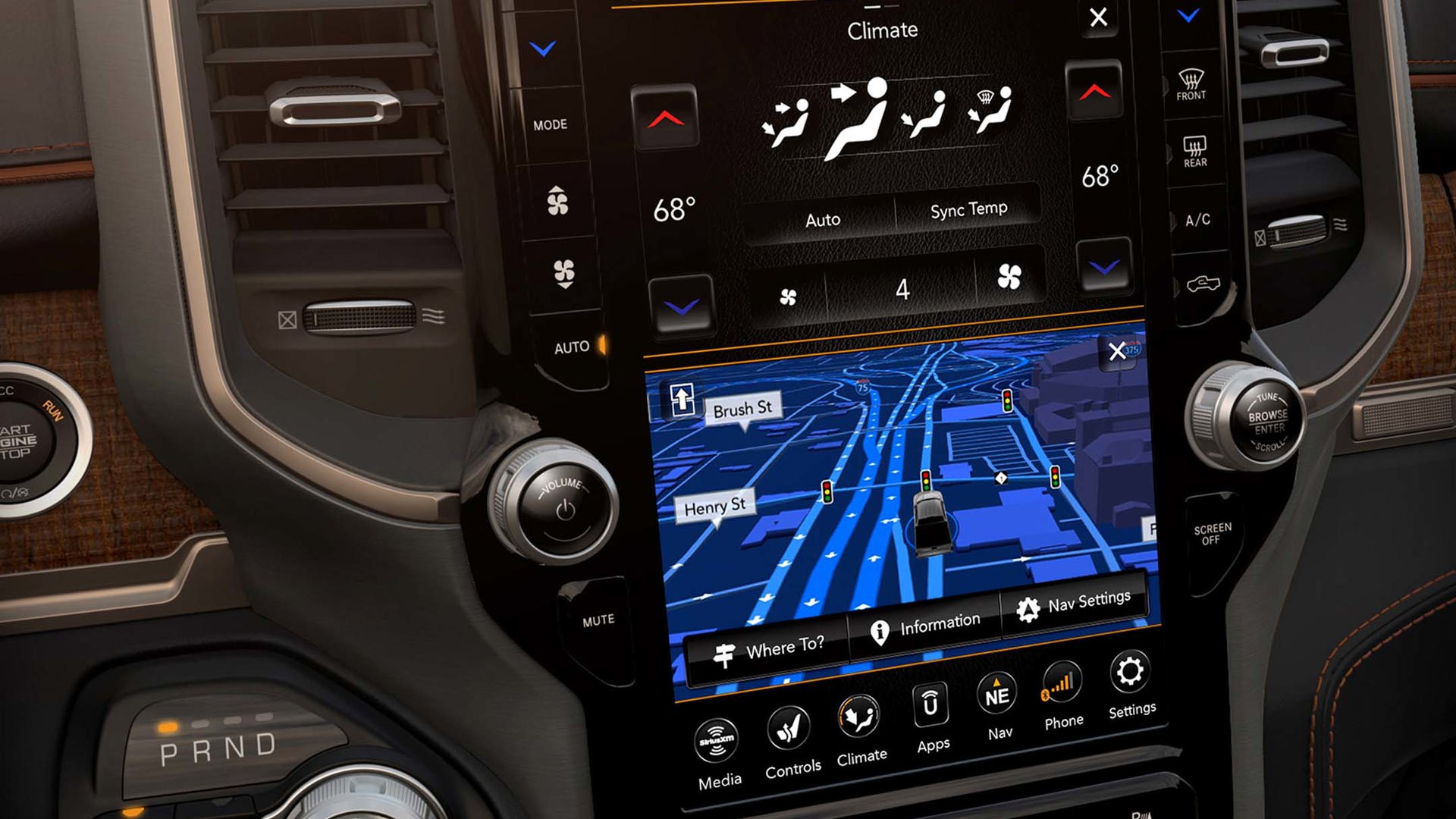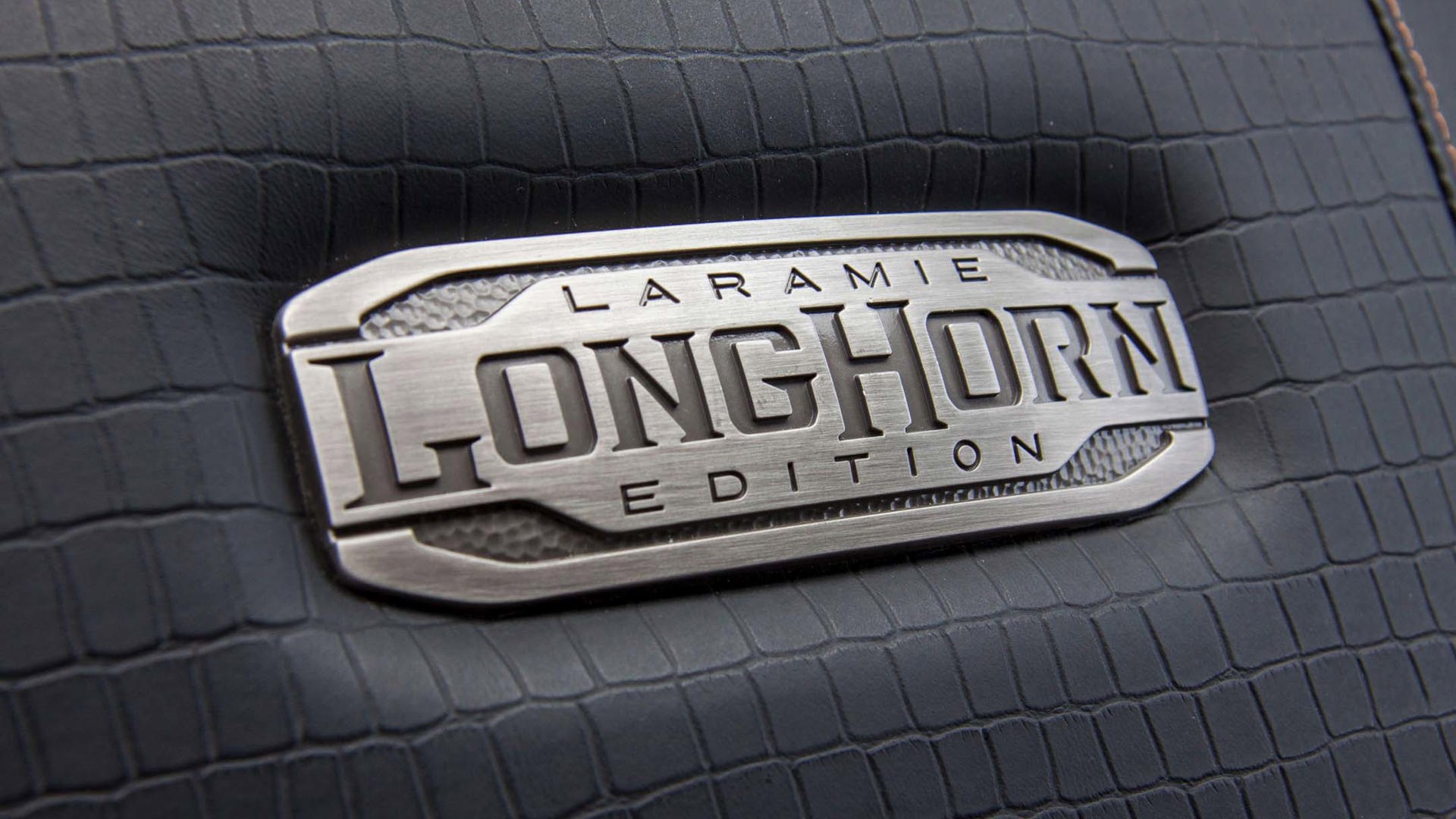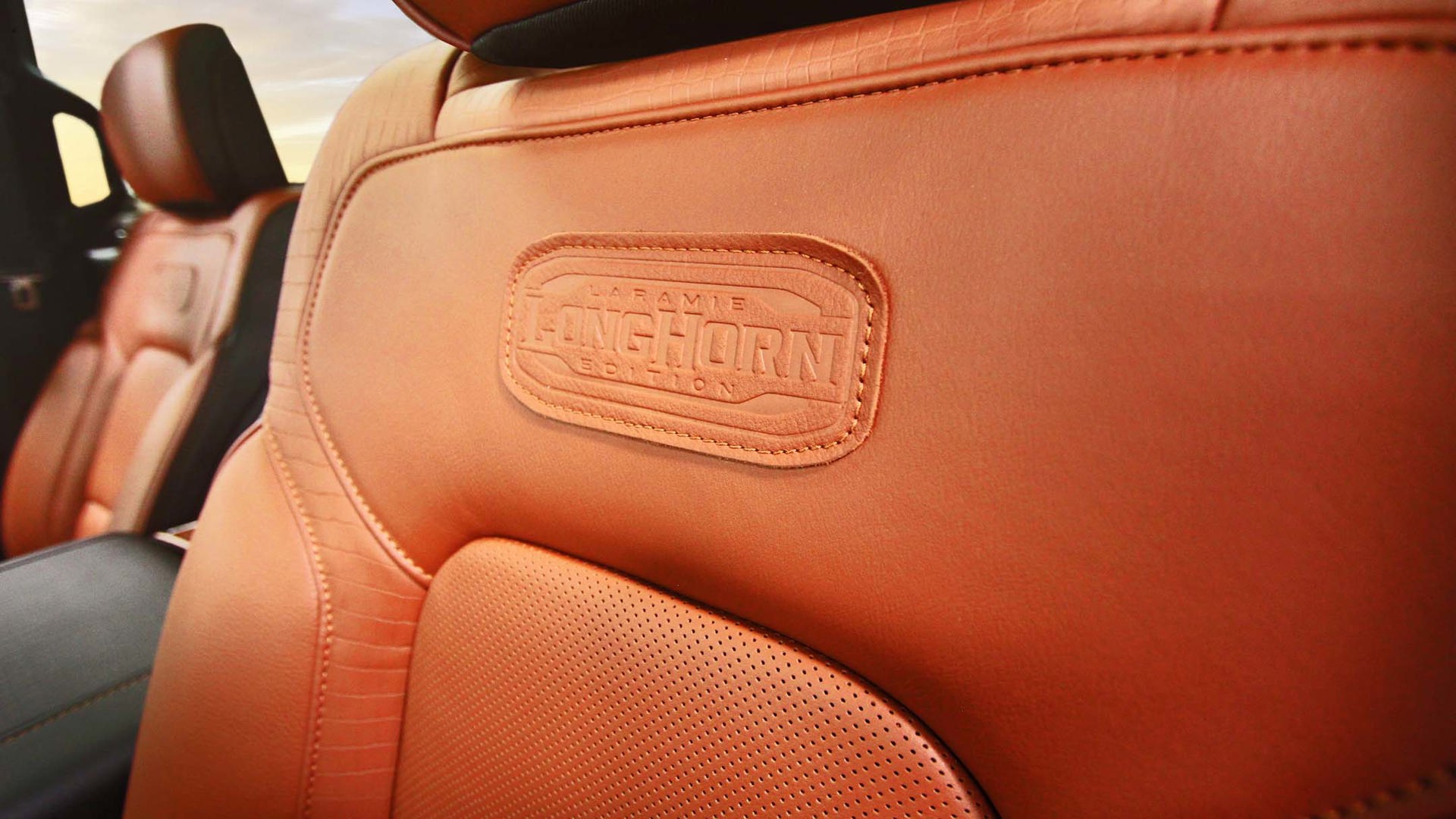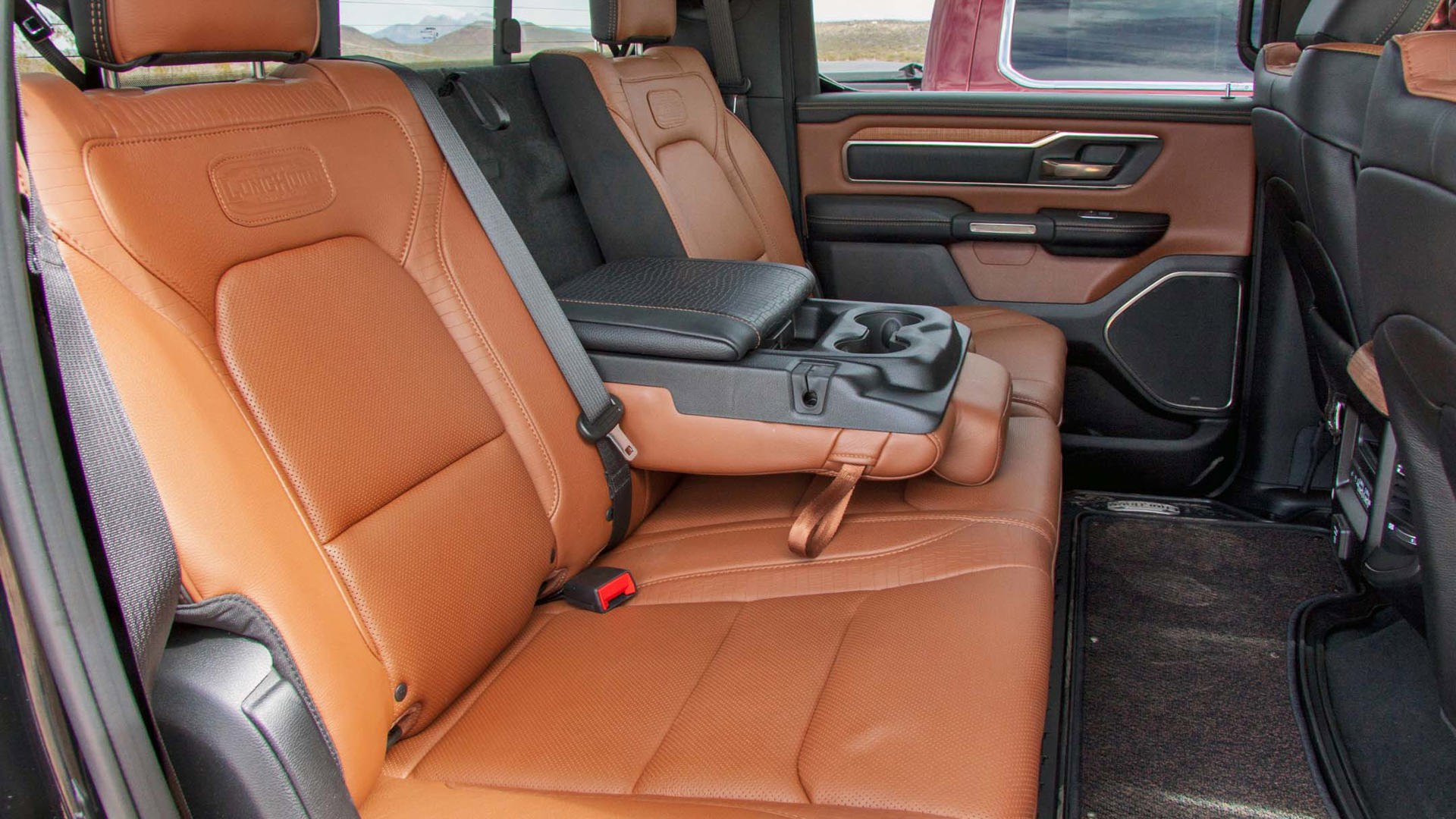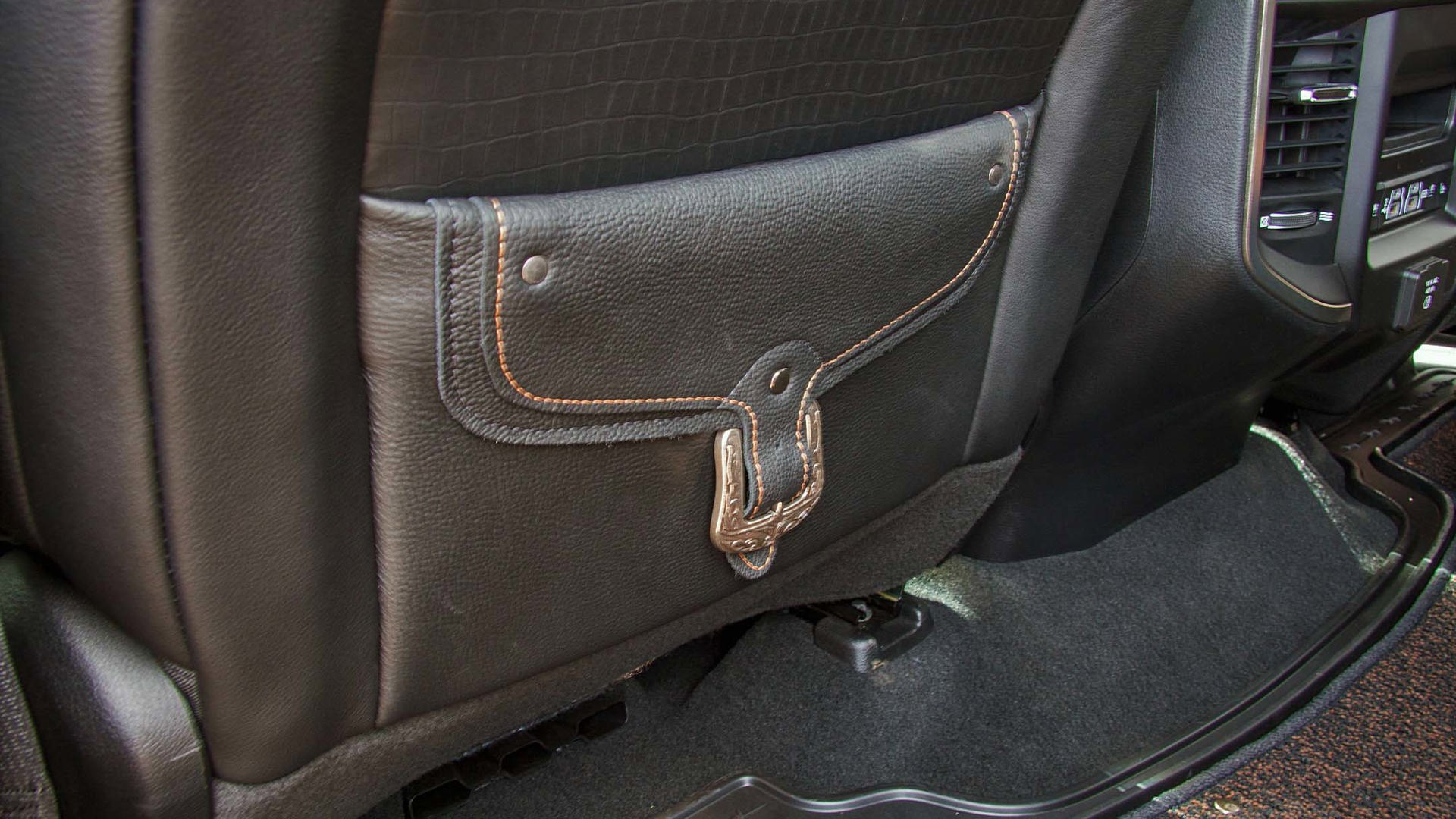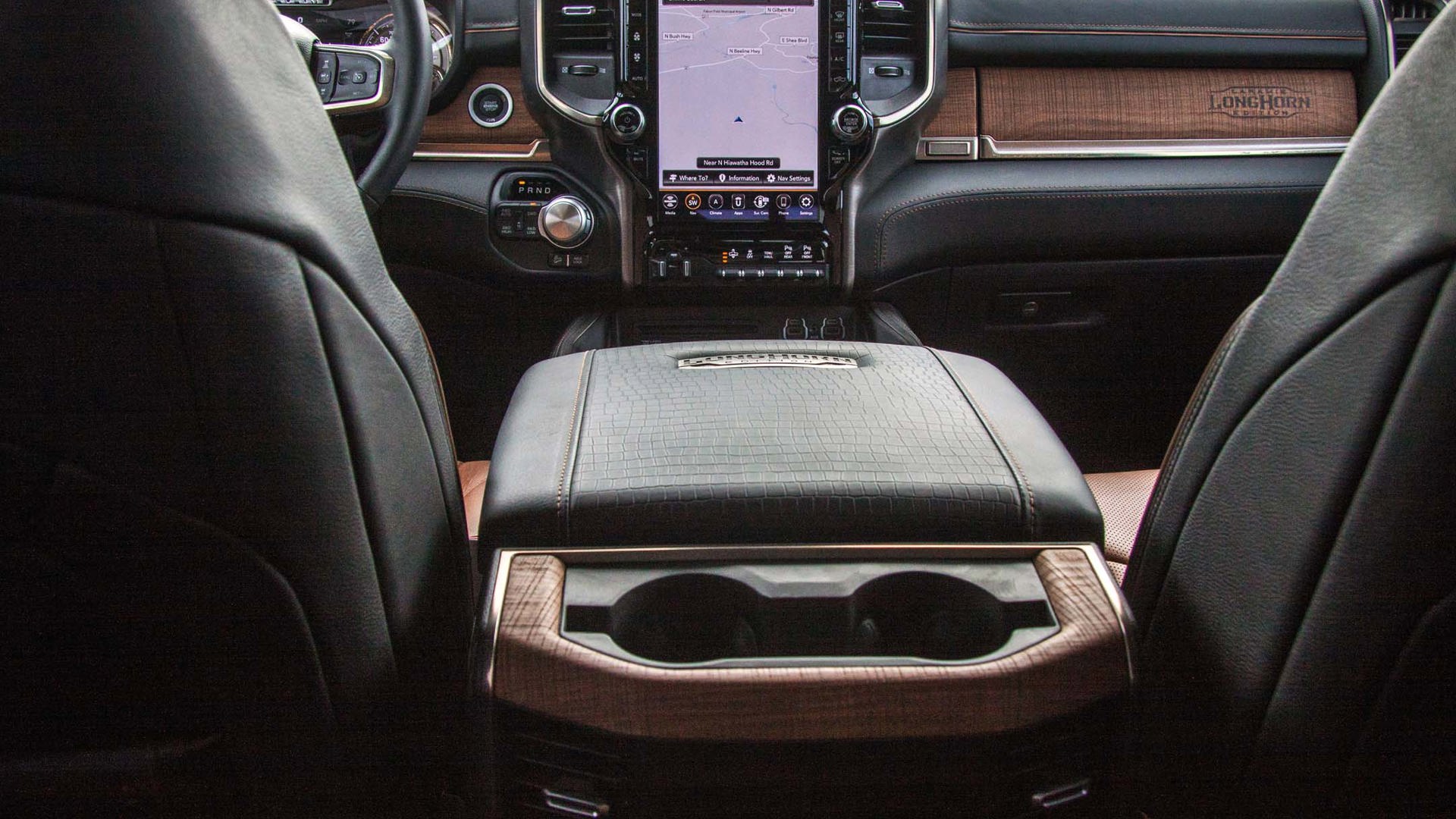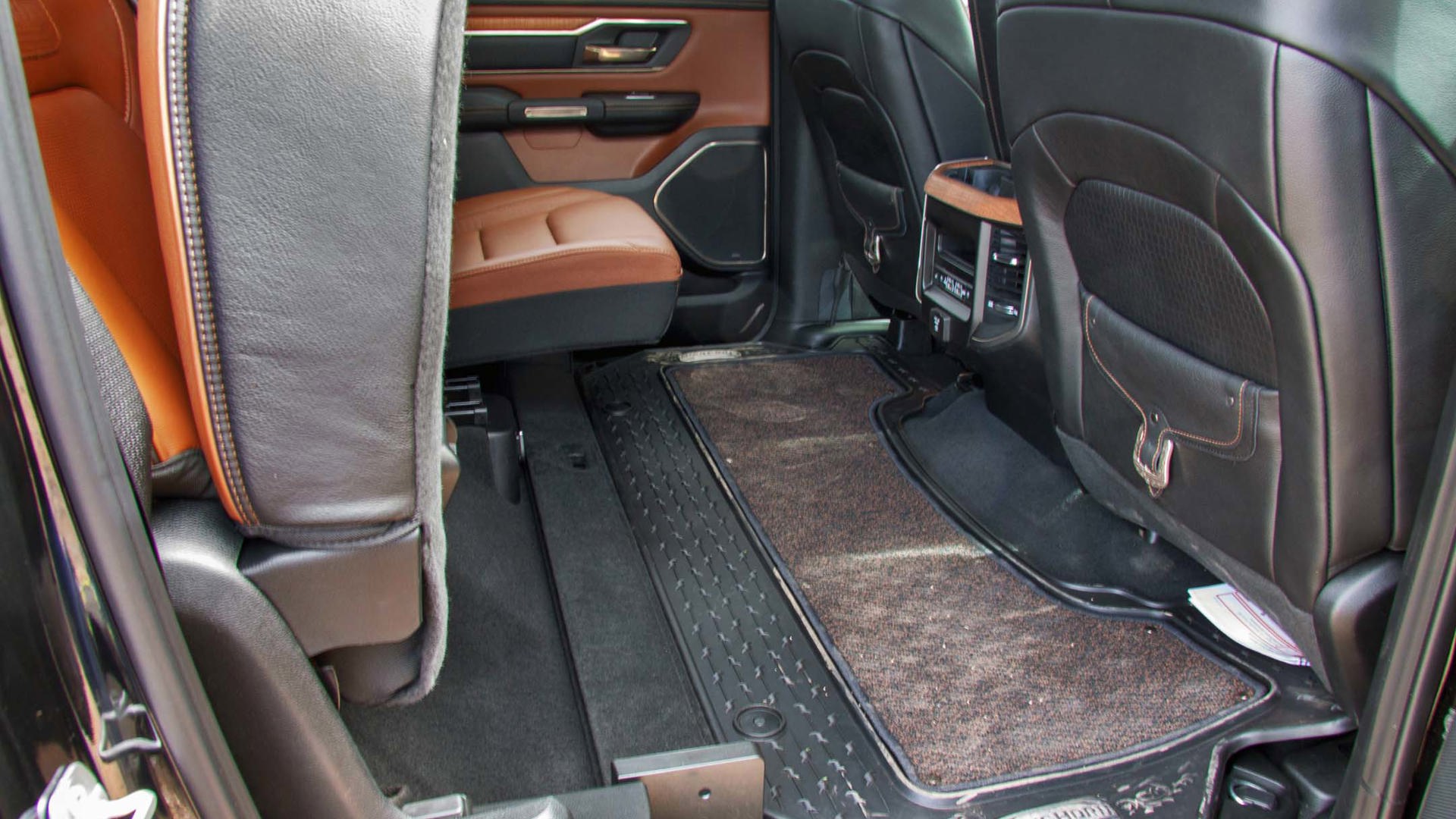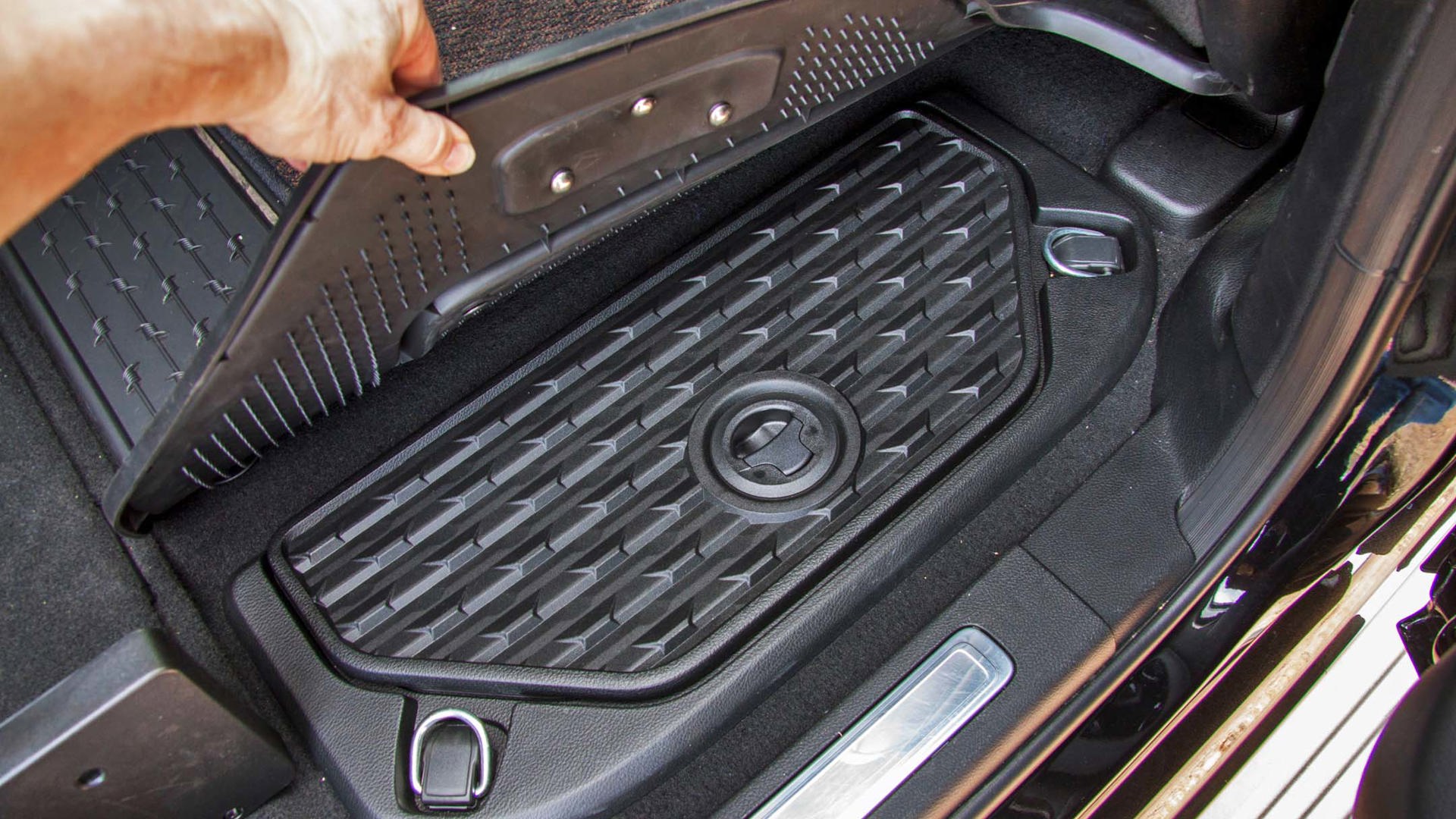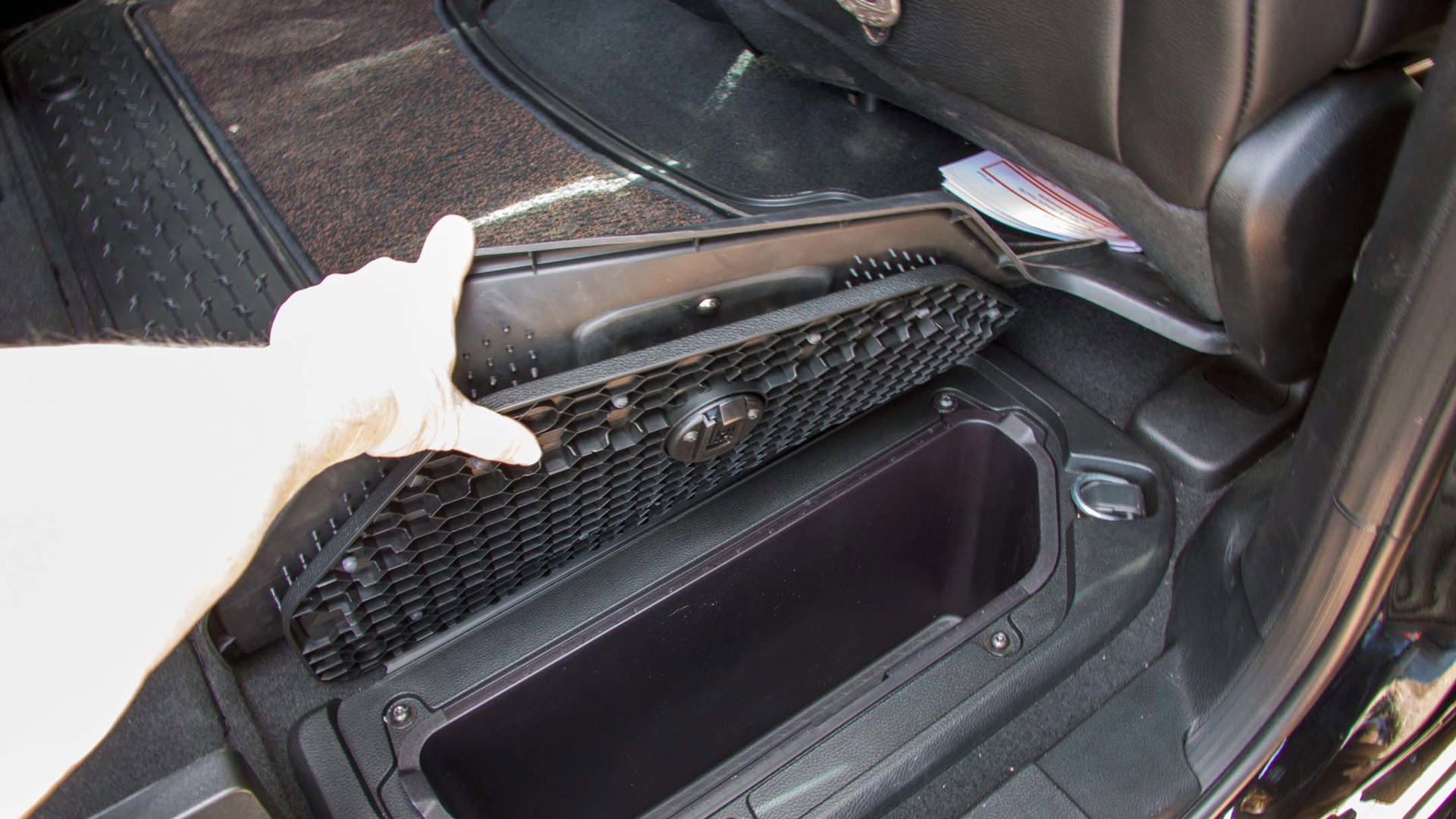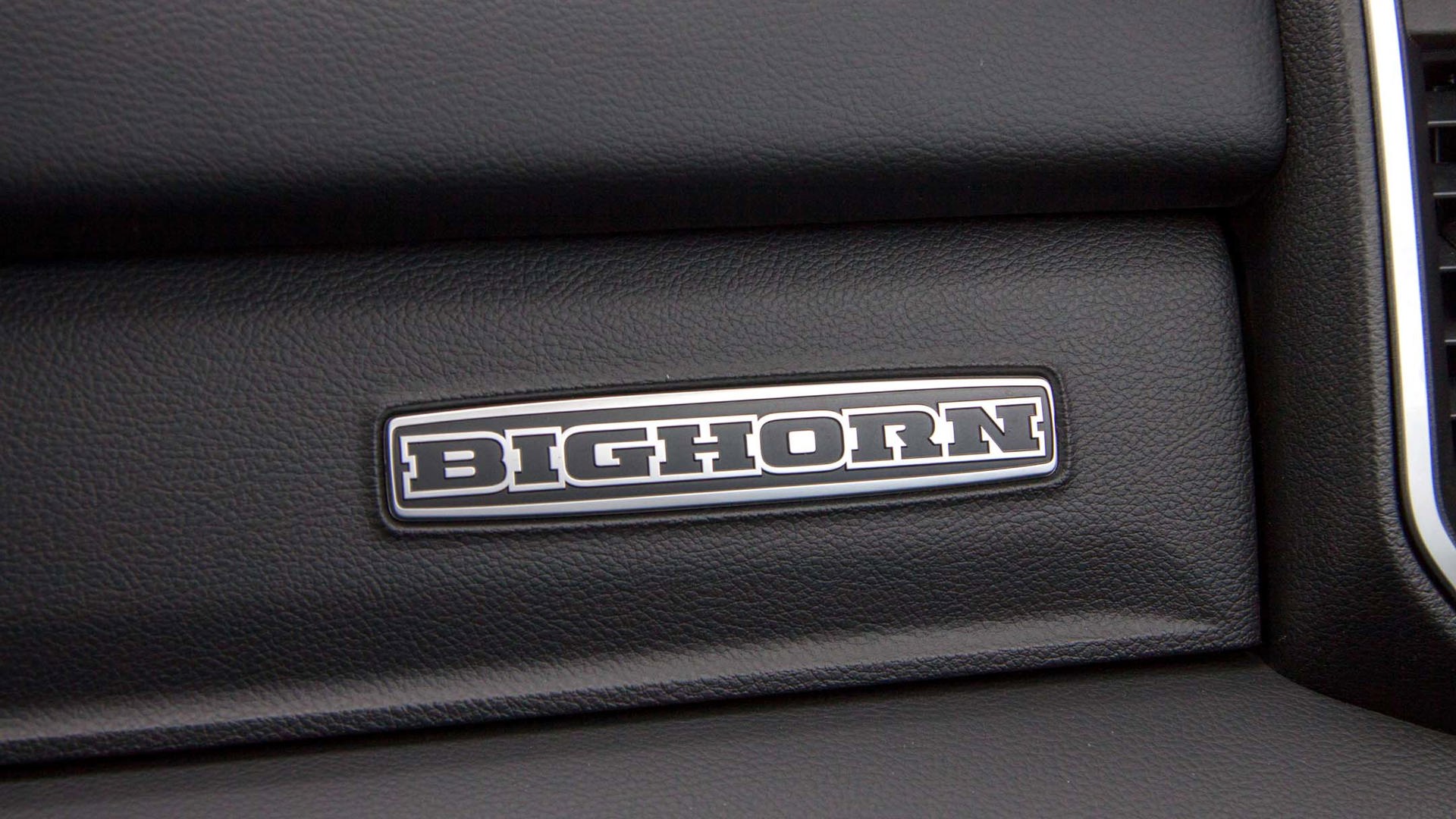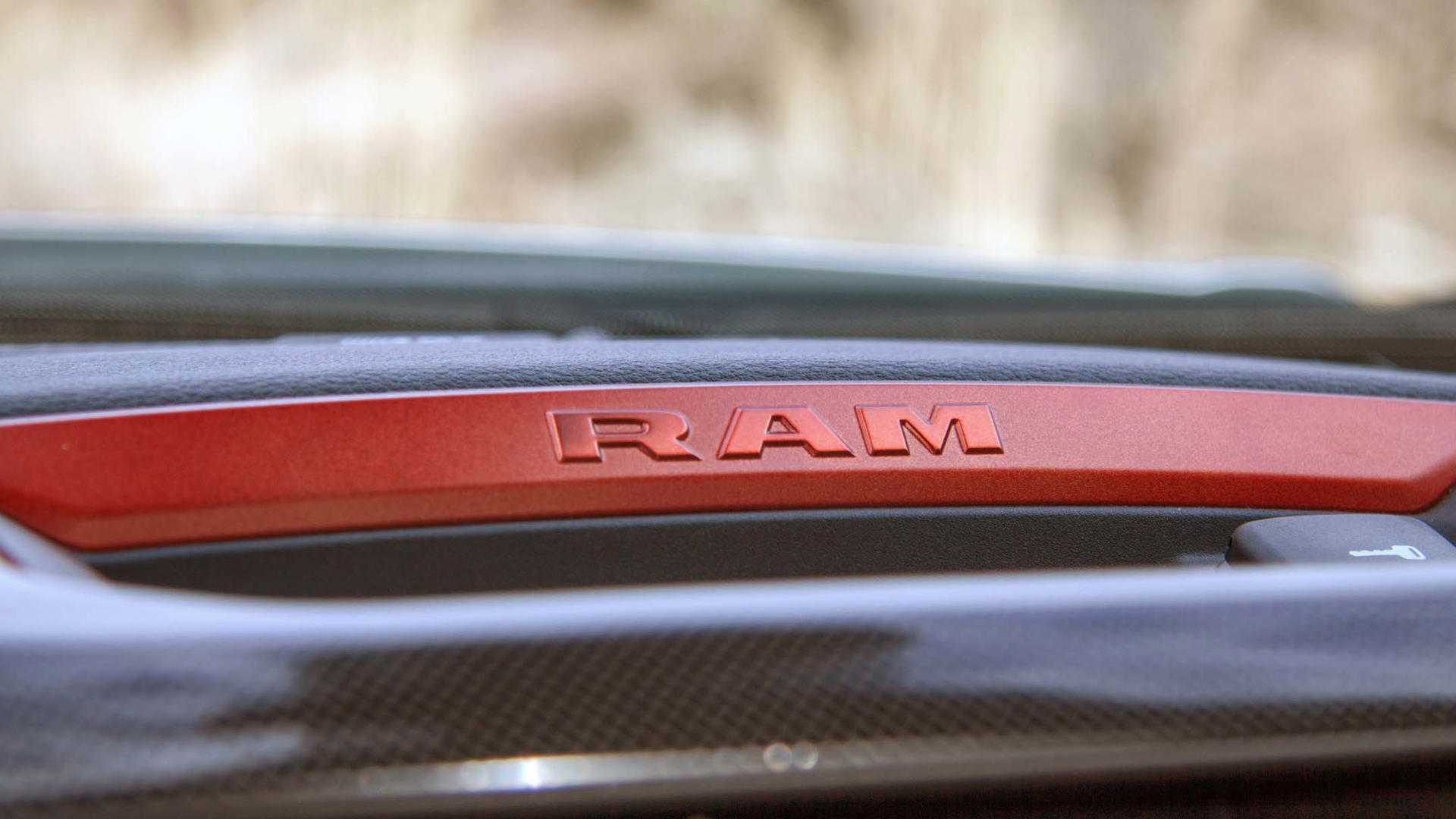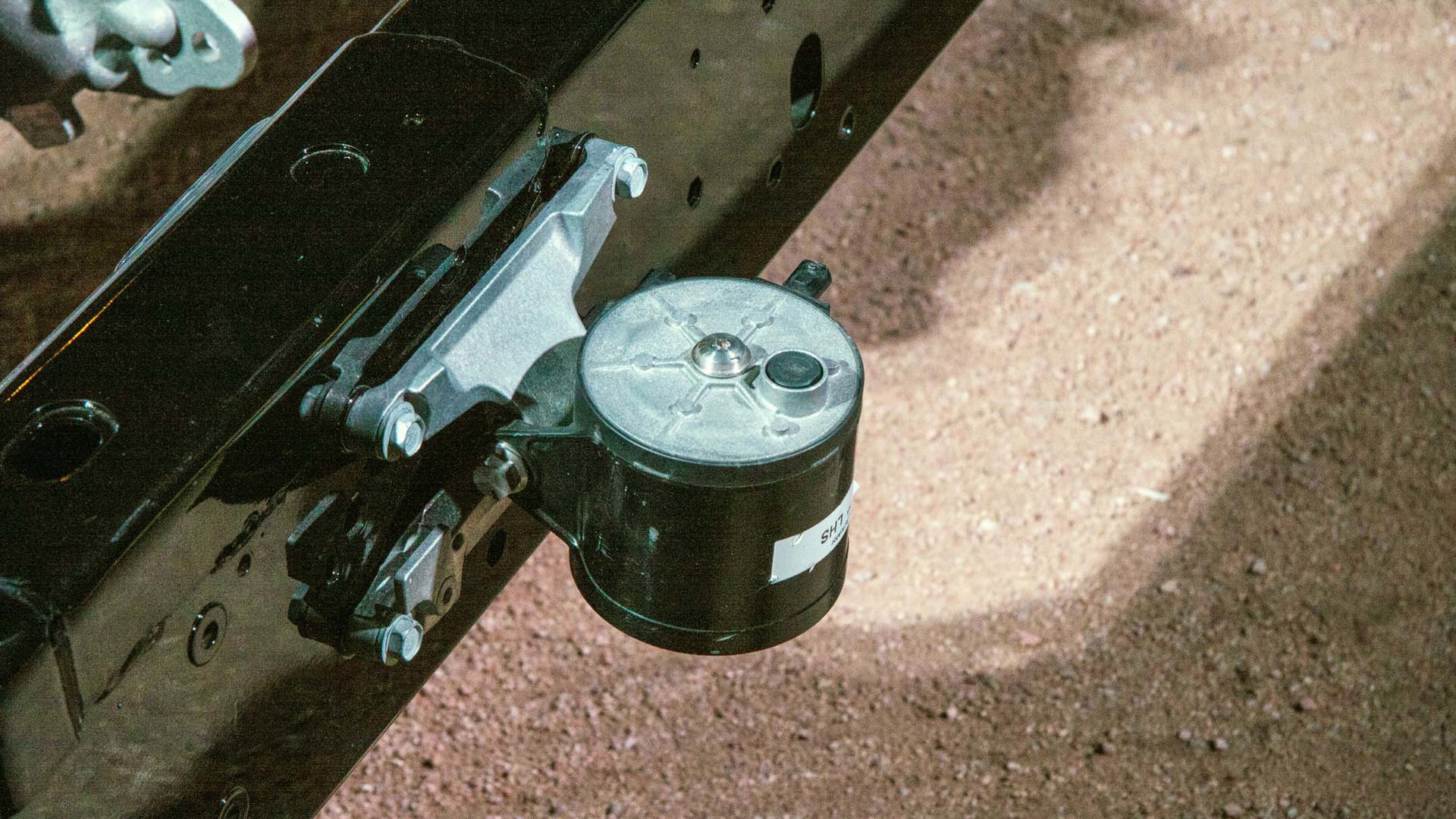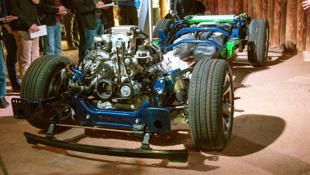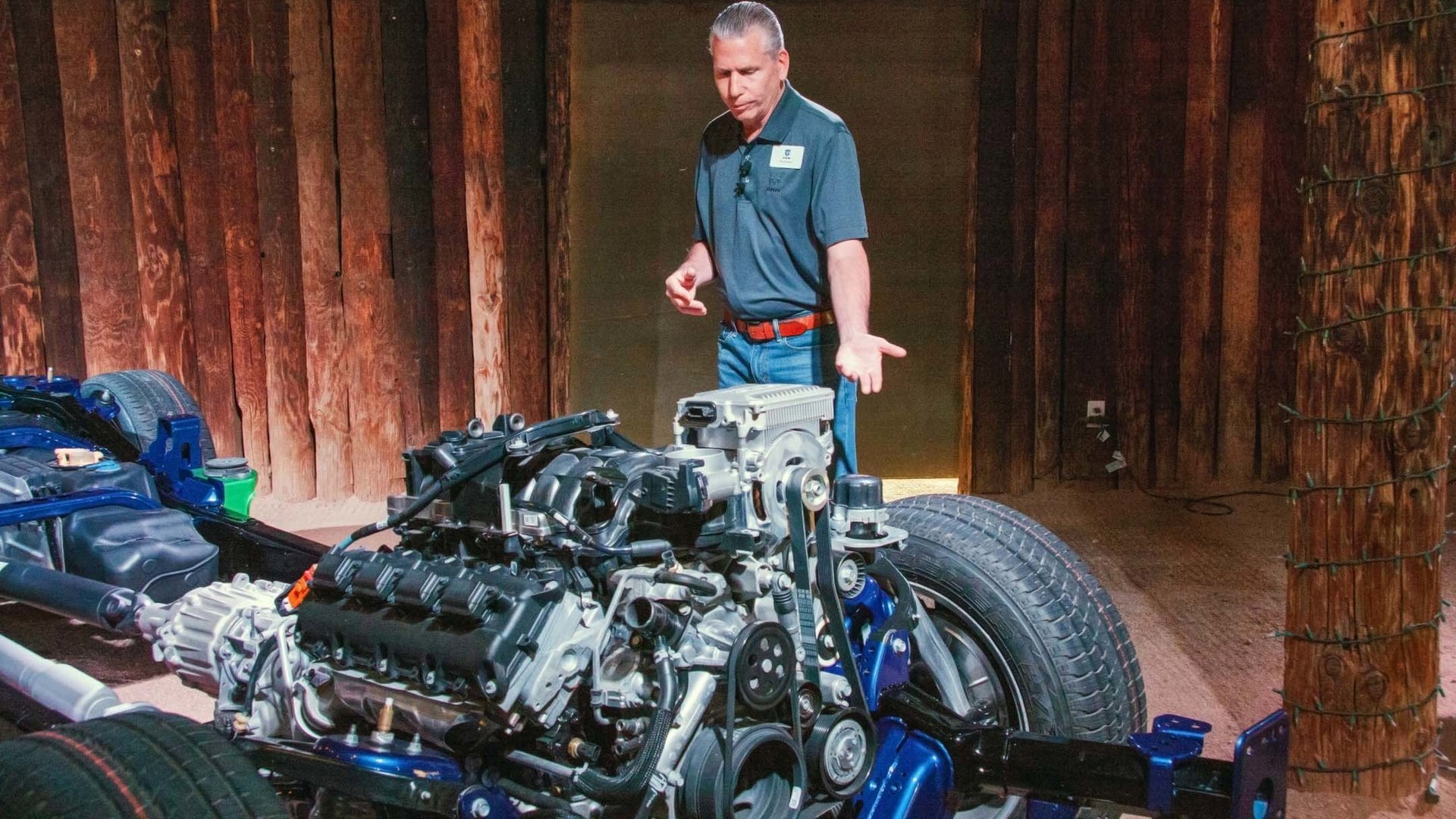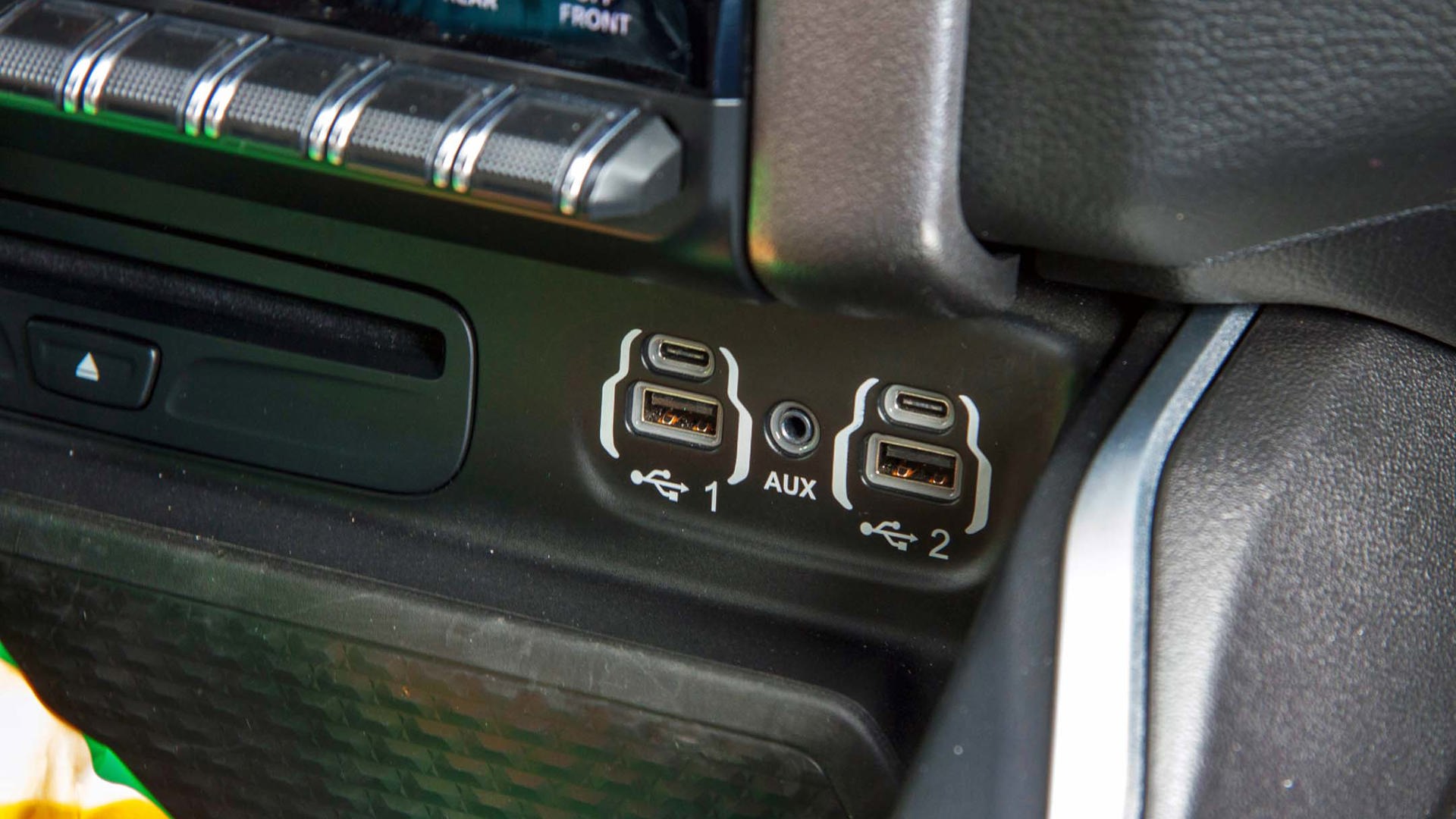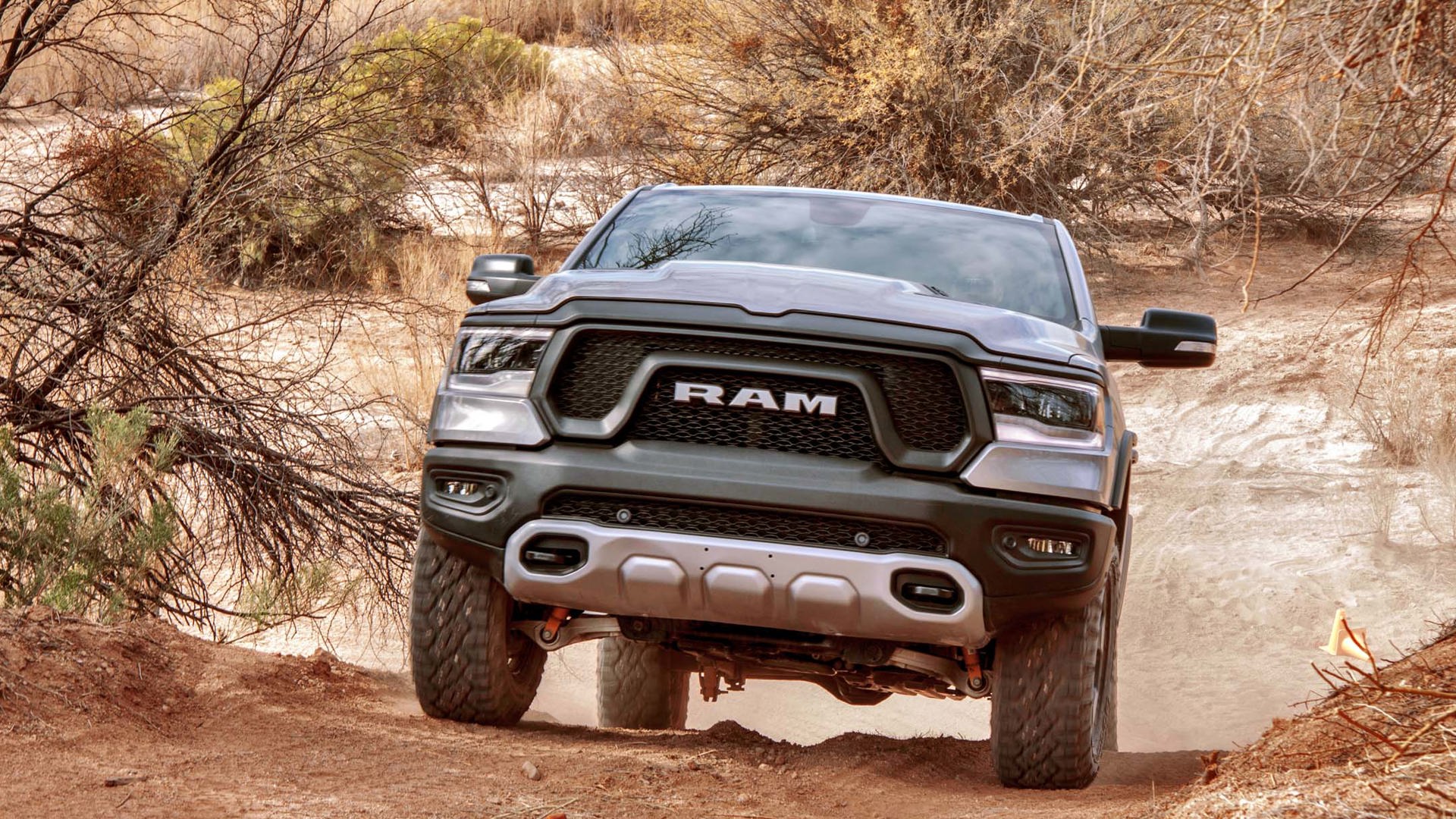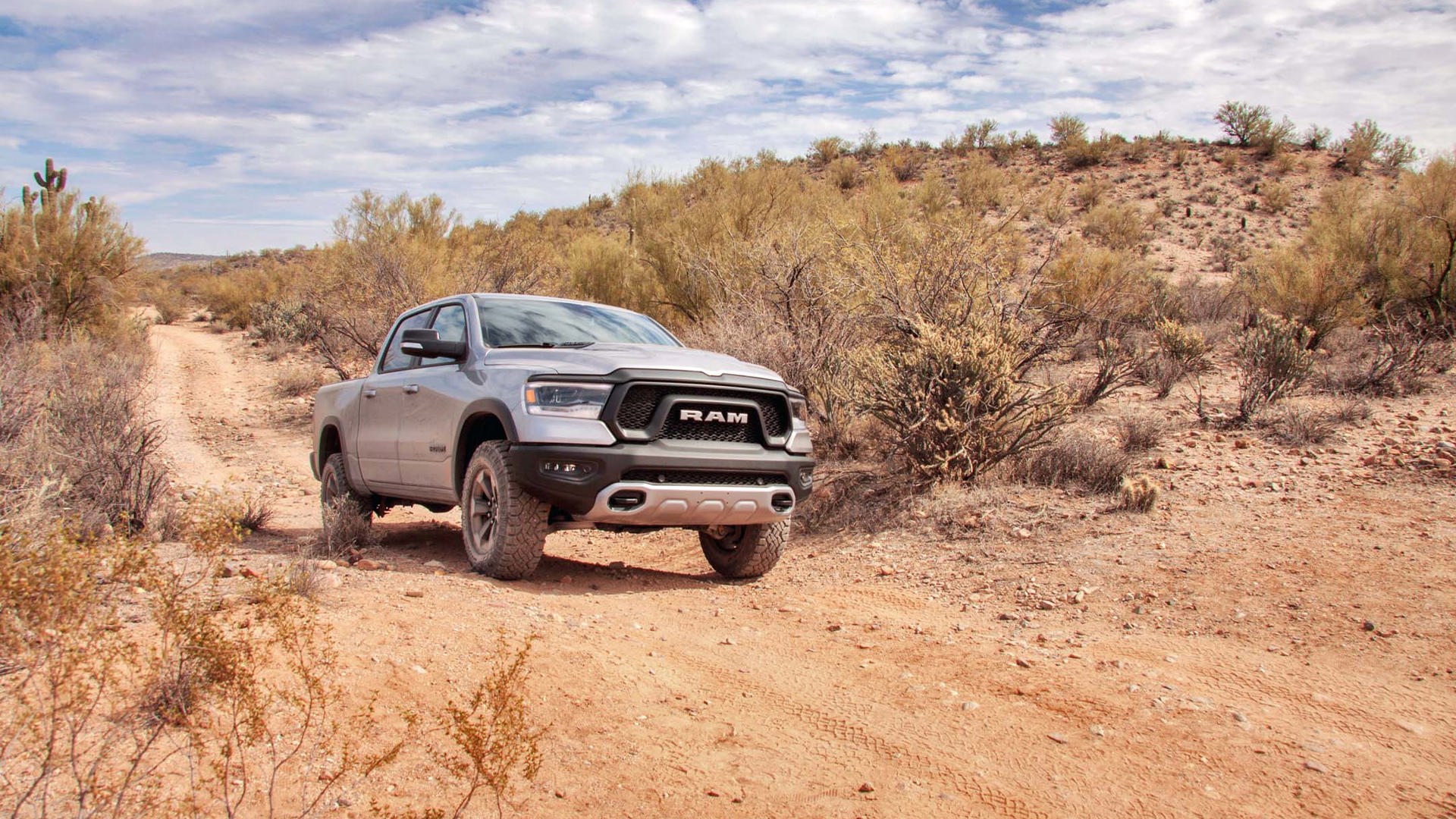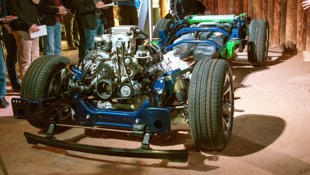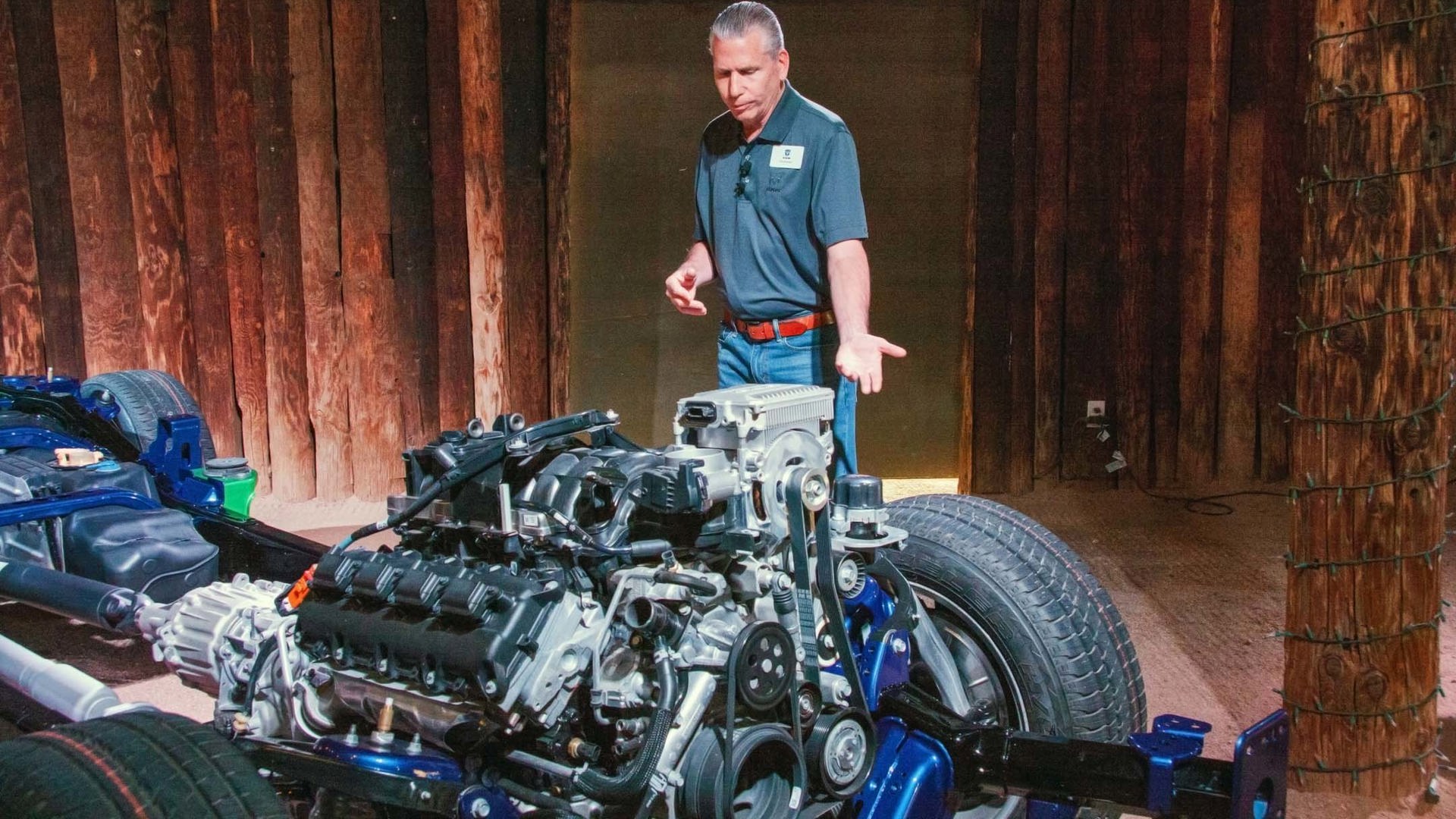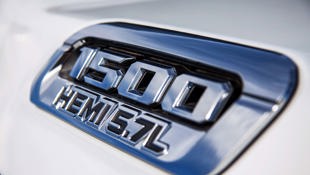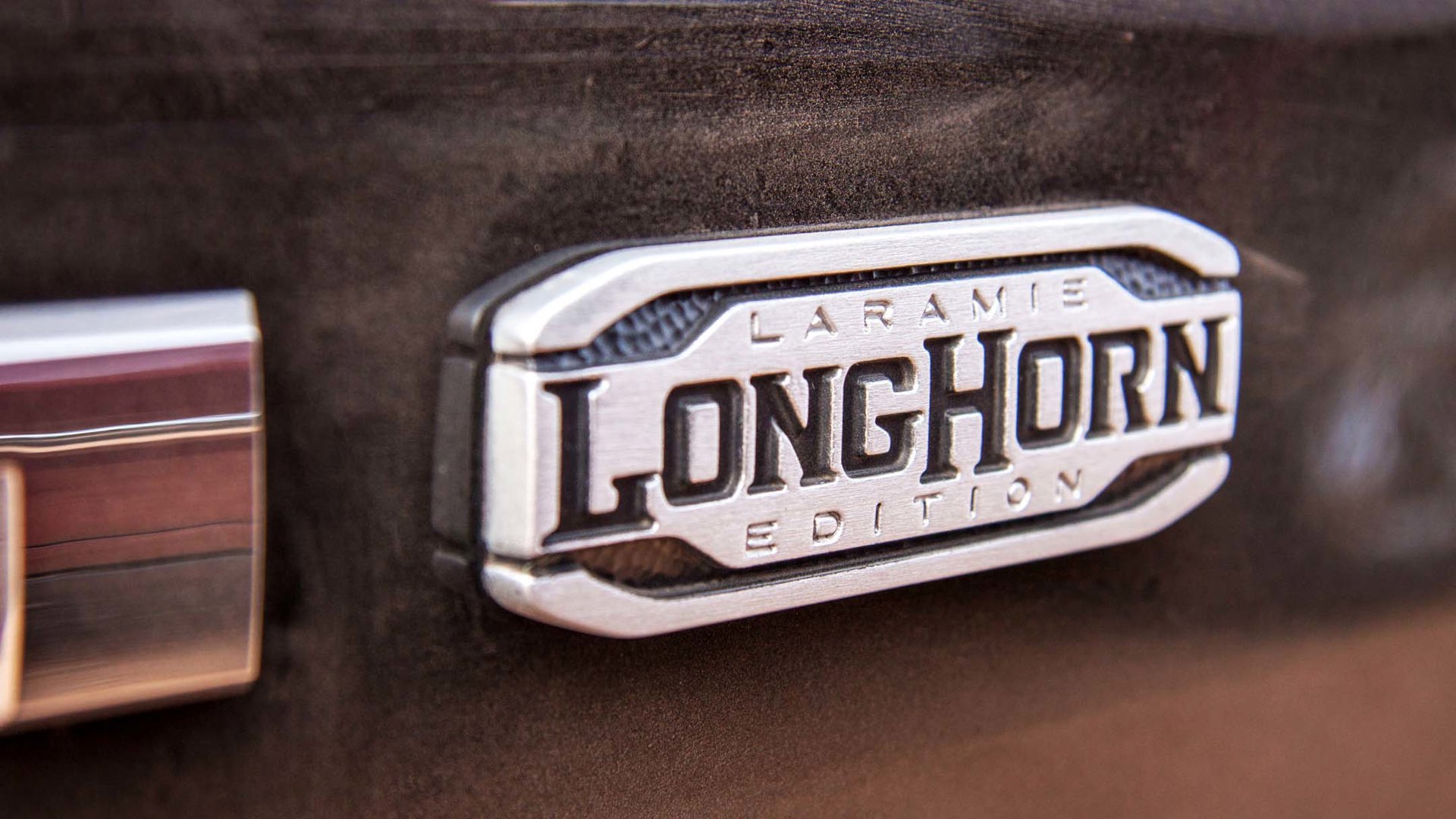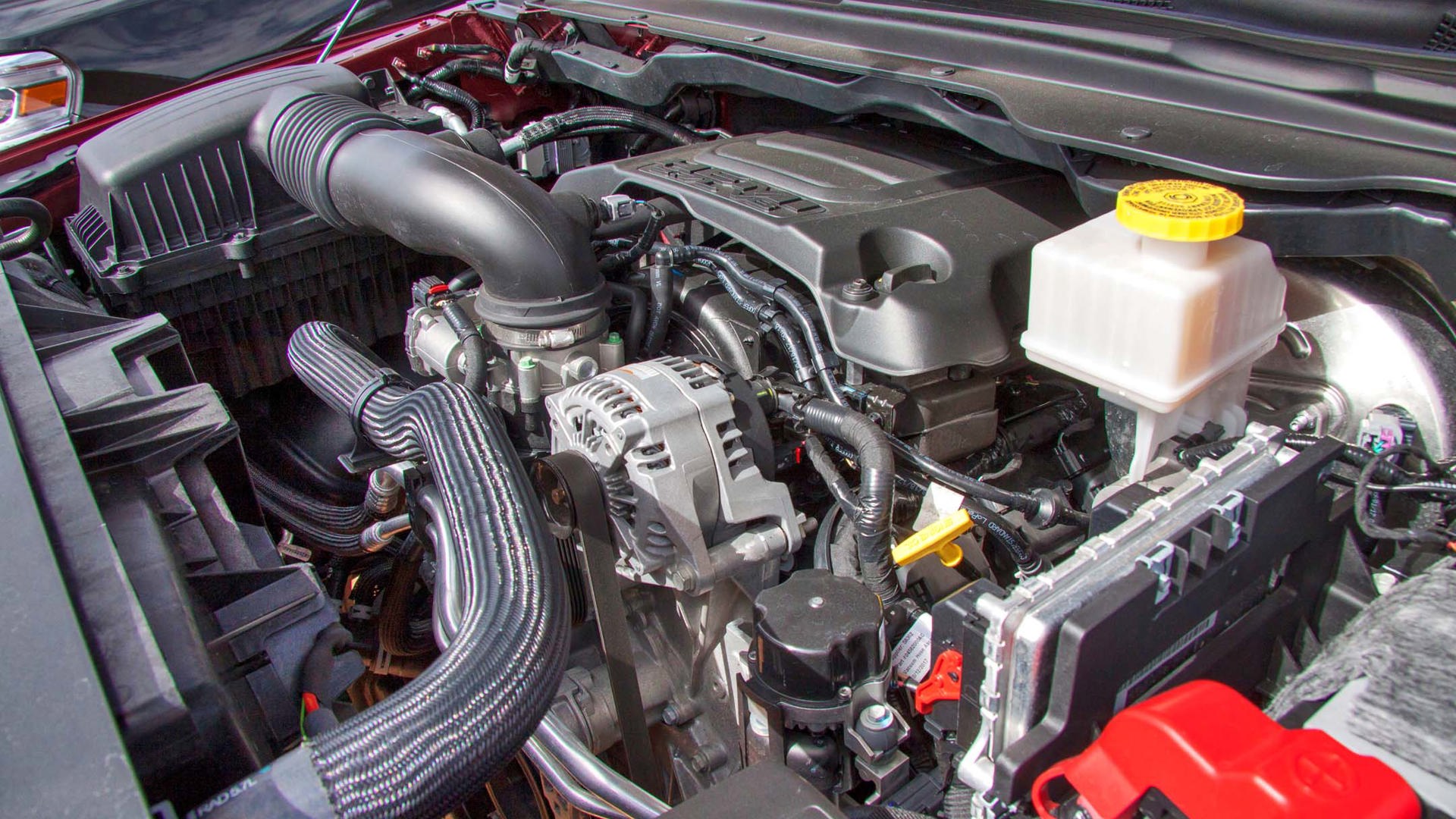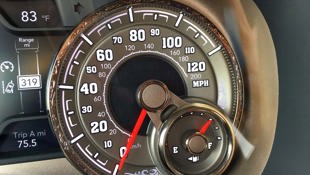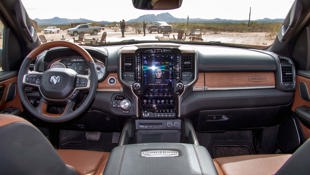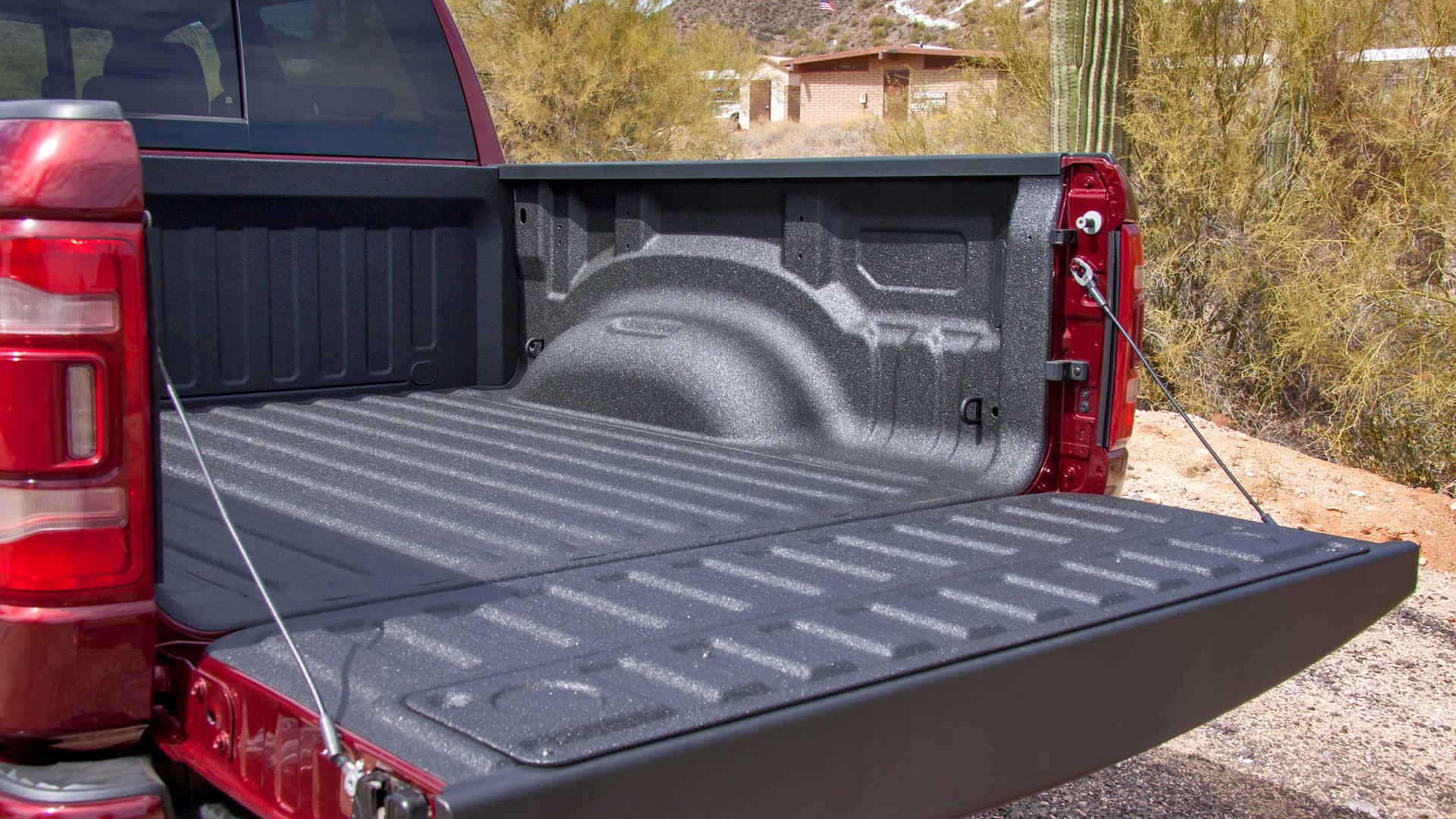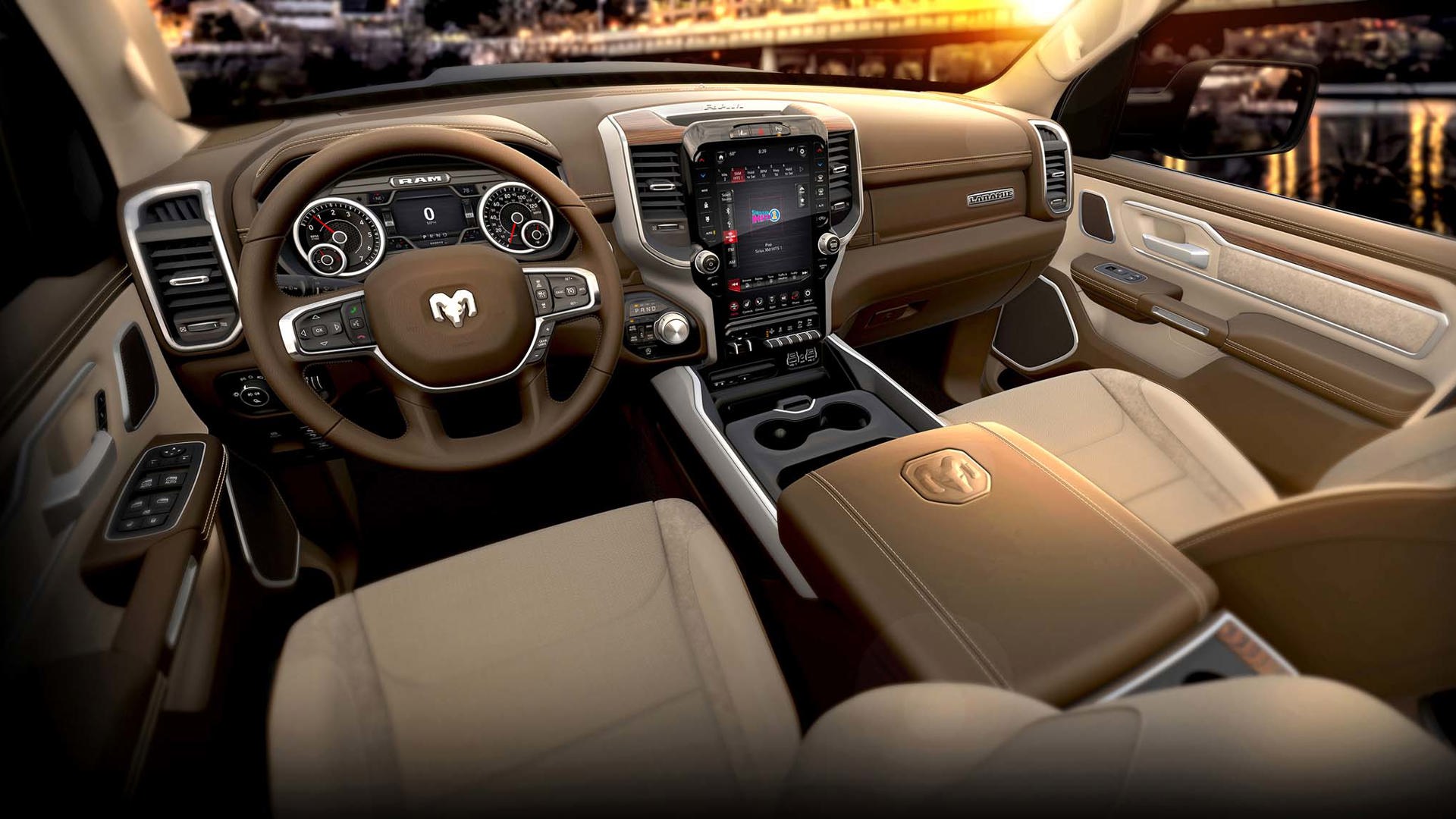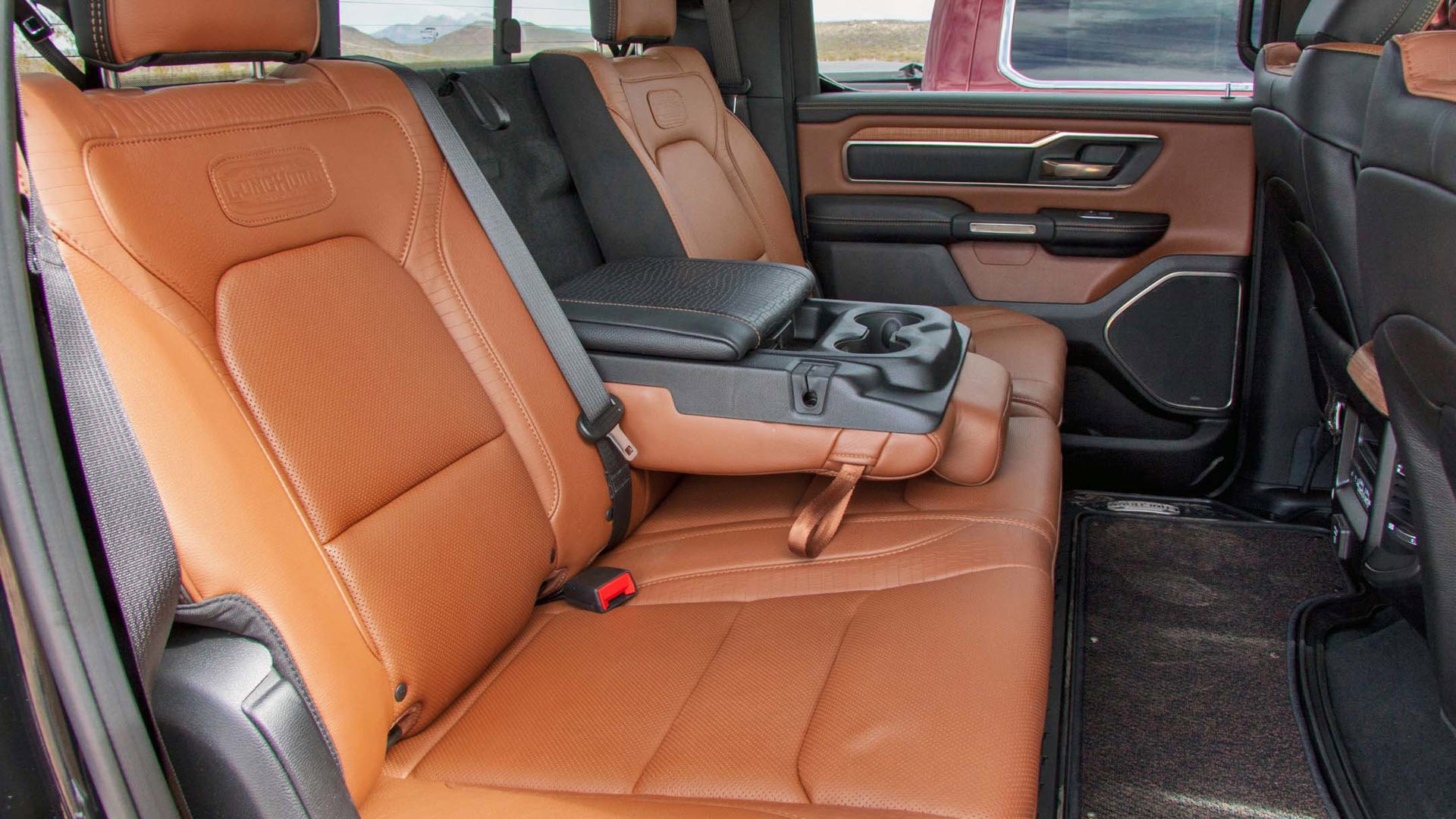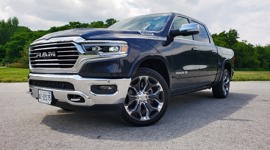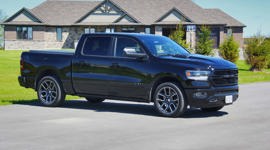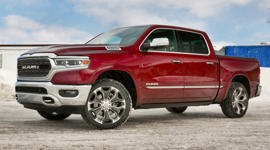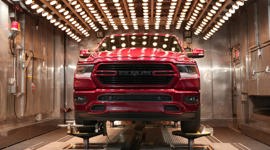SCOTTSDALE, Arizona – “Yeeehaw!” A final blip of the throttle tipped us over the brink of the gully, and we were airborne. There’s an intangible delight in that instant of weightlessness, suspended in time until the wheels touch down and you’re snapped back to reality. It’s an enormous, boxy beast, but the Ram 1500 lands with a coiled grace not unlike the hippopotamus ballerinas in “Dance of the Hours” from Disney’s Fantasia thanks to its air-spring suspension. Clouds of red dust roil in our wake as we wend our way through the saguaro cacti and back to the trail head.
Hybrid technology – a term we never thought we’d see associated with the truck segment’s hairy-chested brawn.
Like every other truck that’s debuted recently, the new 2019 Ram 1500 is bigger, faster, more luxurious, more powerful, yet more efficient than the one before it. The on-going numbers war across the truck spectrum shows no sign of abating – if anything it’s escalating – with each new technical milestone answered in rapid-fire succession by the competition.
Torque and tow ratings are reaching stratospheric heights, while at the same time, manufacturers are under increasing pressure to deliver better performance yet lower fuel consumption. “Necessity is the mother of invention,” so they say, and thanks to the US CAFE’s (corporate average fuel economy) ever-tightening loop, there’s been a swell of innovative technology to mould these lumbering beasts of burden into lighter, leaner, more efficient, and regulation-compliant machines.
The Detroit auto show featured a triumvirate of pickup truck reveals, with each of the Big Three fielding their new-and-improved contender for the light-duty segment. Ford’s aluminum box was previously a ground-breaking move in weight-shaving technology, likewise their new diesel and existing suite of small yet super-efficient turbo-charged engines. GM’s Silverado followed suit with lightweight aluminum hood and door panels, and Sierra, not to be outdone, just unveiled a segment-first carbon-fibre box.
And now Ram has countered with hybrid technology – a term we never thought we’d see associated with the truck segment’s hairy-chested brawn. However, in this case it’s not a parallel powertrain system, but an interesting piece of tech that replaces the alternator – powering accessories and the automatic stop-start system, and adding extra bump when needed for seamless transition between shifts and cylinder deactivation.
And the cutthroat competition doesn’t end with brawn and performance. Across the spectrum, trucks are now laden with technology we once expected only from the premium luxury car segment. Adaptive cruise control, lane-keeping assist, blind-spot alert, and technology that makes quick work out of what were once frustratingly difficult tasks: hitching, backing up, and parking tow rigs. Thanks to the explosive popularity of crossovers, truck manufacturers have also had to ramp up creature comfort features too – with never before seen levels of luxuriousness. You can pay up to six figures for a top-of-the-line Ford F-150 Titanium, and the demographic for GMC’s Sierra Denali now falls within high-end luxury.
Clearly, the stakes have never been higher for pickup truck manufacturers – and for Ram, this is a huge launch some four years in the making. They sold more than 700,000 vehicles globally last year in 60 markets outside of North America.
The Ram was last overhauled in 2009 and for 2019 it’s new from the ground up. Well, sort of. The existing Ram will continue to be built as a 2019 in SL and SLT trims only, in Warren, Michigan, while the newest, 15th-generation Ram will be produced in Sterling Heights. Needless to say, the existing truck, which continues to be a strong seller, should offer some attractive incentives. The easiest distinction between the two? The new truck has done away with the “crosshair grille” and offers variations on the “big rig” theme depending on which model you choose.
Mike Szymkiewicz, head of product planning for Fiat Chrysler Canada, calls the new truck the “strongest, most capable Ram yet, and the most luxurious in its class.”
At its core is an all-new fully boxed high-strength-steel frame that’s 100 lb lighter than the one it replaces. Aside from its rigidity, which allows more precise suspension tuning, the frame features stronger, redesigned cross-members and splayed front rails to help dispel energy in case of a crash. They also provide a better, flatter mounting point for tow hooks.
Thanks to extensive use of aluminum in hood, tailgate, and engine mounts, the truck is 225 lb lighter, yet its larger width and length adds four inches in length to crew cab configurations.
Maximum tow rate increases to 12,700 lb, and payload – where Ram had admittedly been falling behind – has increased to 2,300 lb. Wheel hubs have been updated from five- to a beefier six-lug. With 14.9-inch rotors up front, the Ram has the largest brakes in the segment.
There are three engine choices offered at launch (the 3.0L EcoDiesel is experiencing certification delays and should arrive at the end of the year). The 3.6L Pentastar V6 with eTorque delivers 305 horsepower and 269 lb-ft of torque, with up to an additional 90 lb-ft of torque at launch (via the eTorque system, explained below). The 5.7L V8 eTorque has 395 hp and 410 lb-ft, and another 130 lb-ft at launch.
The 5.7L is also available without eTorque technology. All feature Chrysler’s Multi-Displacement System (MDS) cylinder-deactivation fuel-saving technology, and all come with an eight-speed automatic transmission.
The eTorque system isn’t a traditional parallel hybrid – rather, it’s a belt-driven electric generator–motor and 48-volt battery pack that replace the alternator. It looks after stop-start function and brake regeneration, and also provides a quick burst of energy when it’s most needed – at start-up to quickly overcome inertia, and to help produce seamless transitions during cylinder deactivation and shifting. Reclaimed energy from braking and deceleration is stored in the battery, which is located behind the rear seatbacks inside the cabin, where it benefits from interior climate control. According to FCA, Ram has managed to shave 10 percent off fuel consumption over the outgoing model thanks to eTorque, lightweighting, improved aerodynamics, and an active air dam on most models.
At launch time, the Ram is available only in Crew and Quad Cab models, with regular cab to come later. As mentioned before, crew cab space crowns by two inches, and there’s now class-exclusive reclining rear seats. Flip up the seat bottoms, and there’s a perfectly flat load floor, covered with “hybrid” mats – the carpet pops off to reveal tough durable rubber in muddy seasons. Lift up the mats and underneath are two hidden storage cubbies in which to hide your trailer hitch or valuables.
Other upgrades of note include a new lightweight tailgate that gently lowers on nitrogen shocks at the touch of either button or fob; new interior lights for the lockable bedside Ram Boxes; additional tie-downs; and an optional 900-watt Harman Kardon sound system with 19 speakers.
Truck manufacturers have really raised the ante when it comes to interior luxury, and Ram didn’t hold back. If you want hand-tooled and branded cowhide with silver wingtip-type embellishments – look no further. The Longhorn and Limited Editions offer that and “open pore” wood, a dual-pane panoramic sunroof, a “Ram-Charger” wireless charging pad and a class-first available 12-inch touchscreen display that’s fully configurable and intuitively responds to pinch and swipe gestures. There’s also an 8-inch Uconnect system available and the standard 5-inch system on base models.
It’s a luxurious environment and very little disruption entered the cabin, regardless of the roughness pf the terrain we were travelling over. In addition to more sound insulation and improved suspension absorption, the new Ram features active noise cancellation, which works with the sound system and speakers throughout the cabin, and there’s a pair of electronically controlled vibration modules attached to the frame which dispel any vibrations generated by the V8 going into four-cylinder conservation mode.
With its light, accurate steering, well-damped suspension, and beautifully crafted cabin, our Longhorn tester might as well be a premium luxury sedan. Fully loaded with park assist, a blind-spot monitoring system that works with up to 40-foot trailers, adaptive cruise, heated steering, reclining rear seats, a 12-inch display, and a centre console with high-speed USB and room for a laptop and file folders; it’s easy to see that trucks are shoving their way back into the daily driver market.
Swapping our luxurious Longhorn for a more off-road-focussed Rebel, we hit the trails, keeping a wary eye out for the small but vicious wild pigs known as javelinas. Rumbling through the dusty gully, we easily scale a steep slope, momentarily getting bogged down in the deep sand before shaking free. The Rebel is a plenty capable bushwhacker, and looks the part: 18-inch wheels and 33-inch Goodyear DuraTrac All-Terrain Tires, aggressive front skid plates, tow hooks, and exclusive Ram grille with powder-coated front and rear bumpers, and a bulging performance hood. It also comes equipped with an electronic locking rear differential, transfer case, 3:92 rear axle, optional air suspension, and Bilstein shocks with 1-inch raised height.
Canadians, it seems, love their sport trucks and this year there’s a Canada Exclusive Ram Sport. It’s an appearance package that features a monochromatic exterior with body-coloured mirrors, grille, and door handles, dual black exhaust tips, sport performance hood, 22-inch black accent wheels and a unique black interior with black satin chrome.
The new Ram will arrive in dealerships later this spring and is available in seven models (down from 11). Pricing starts at $46,095 for the Tradesman all the way up to $74,195 for the Ram 1500 Longhorn Limited.
